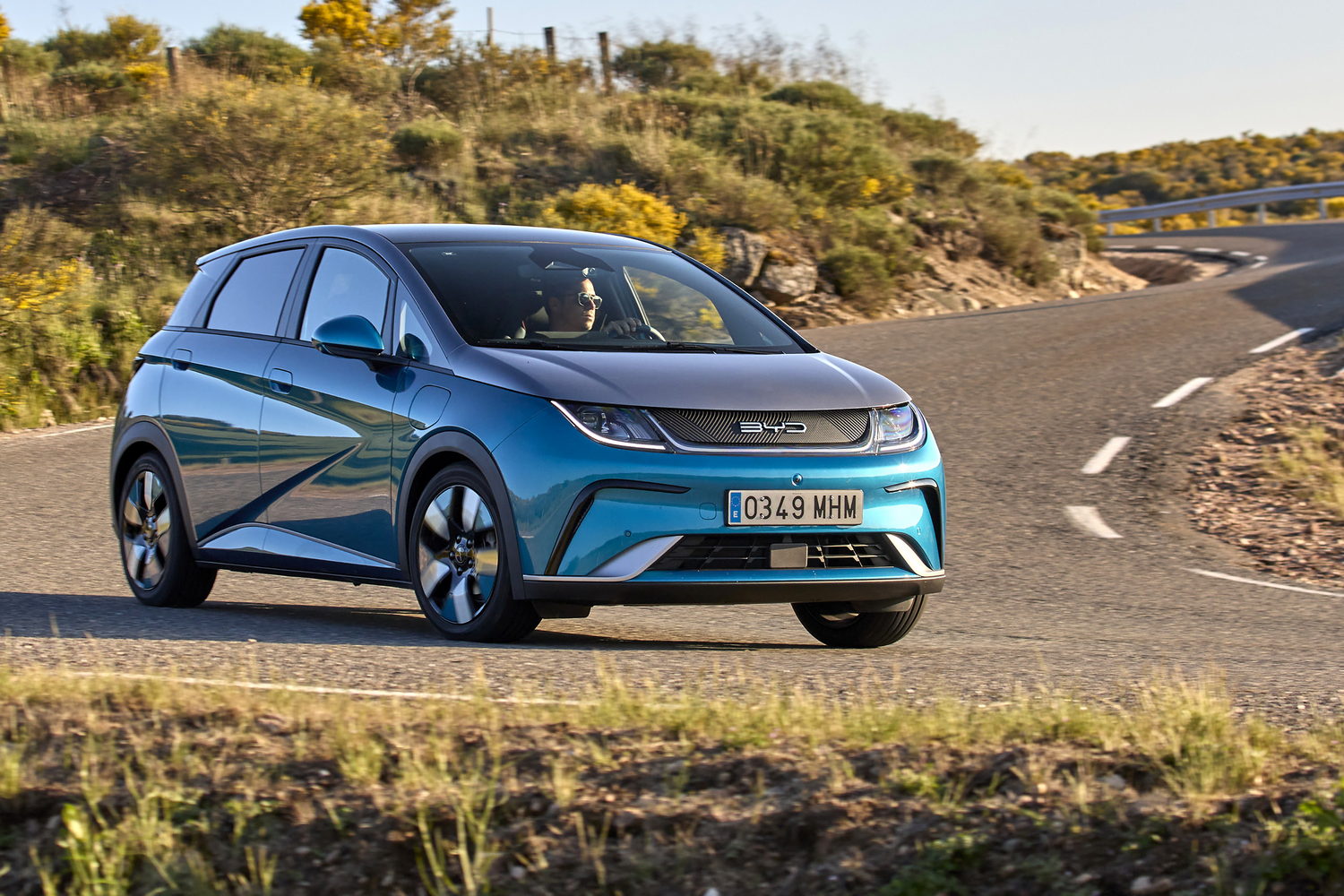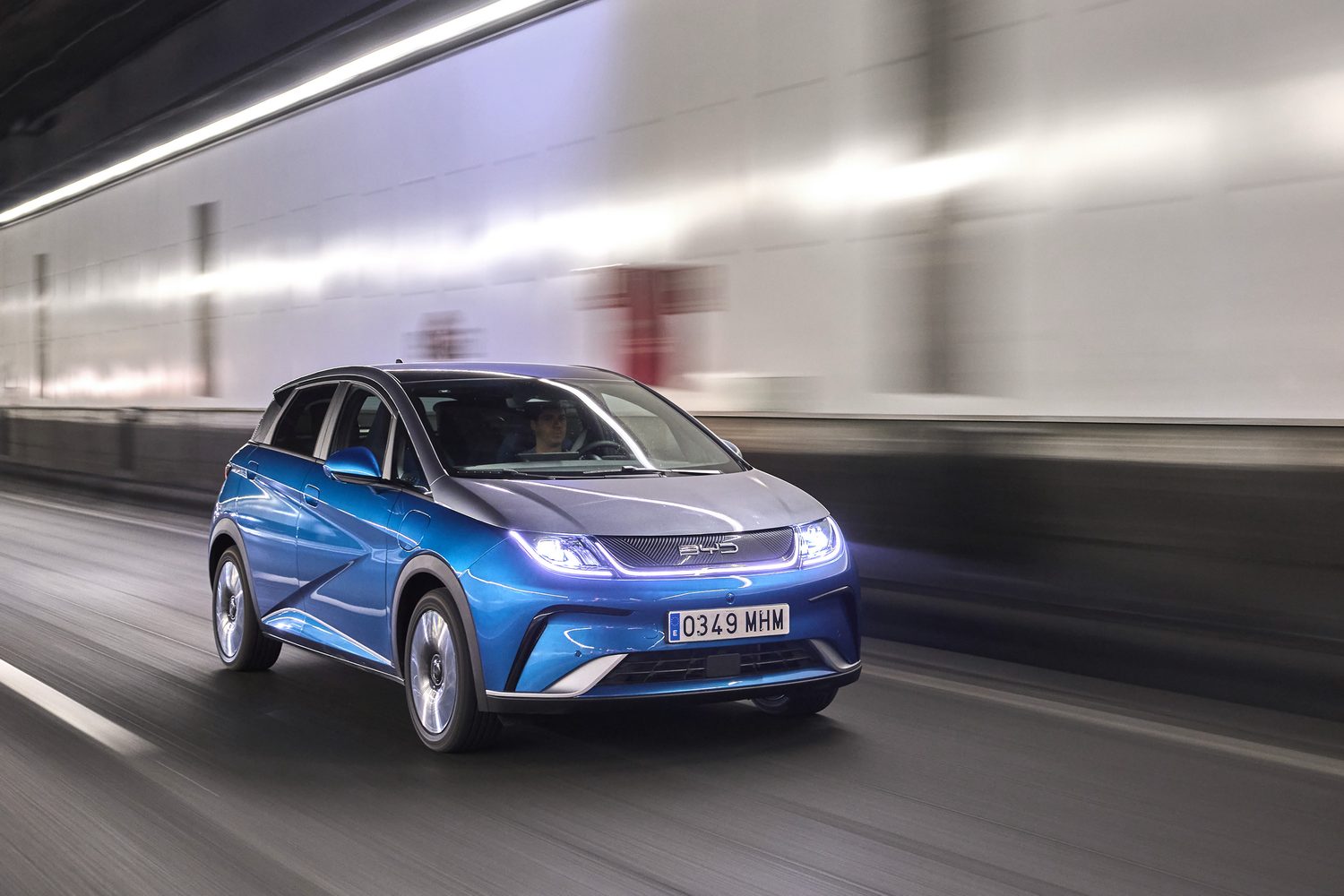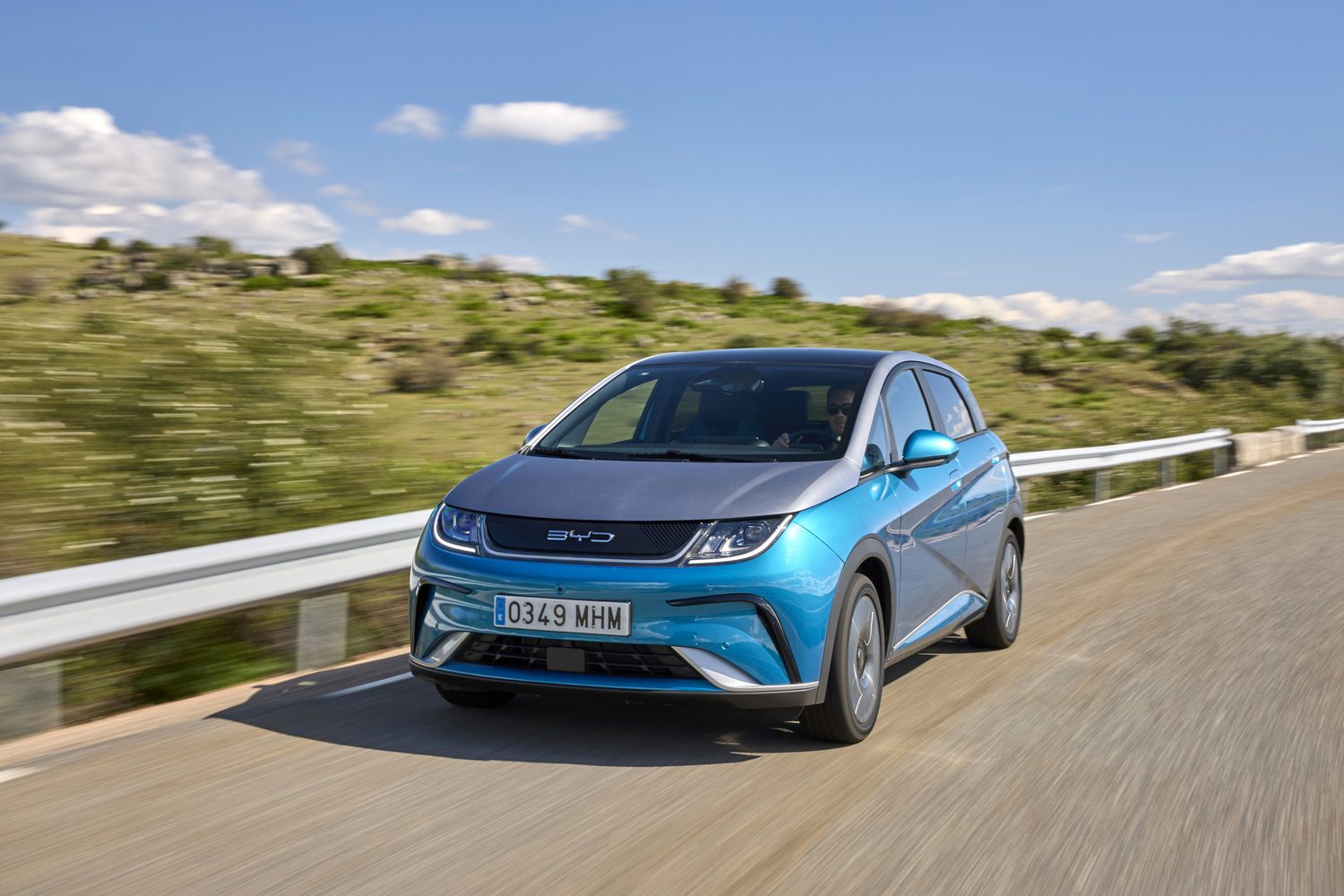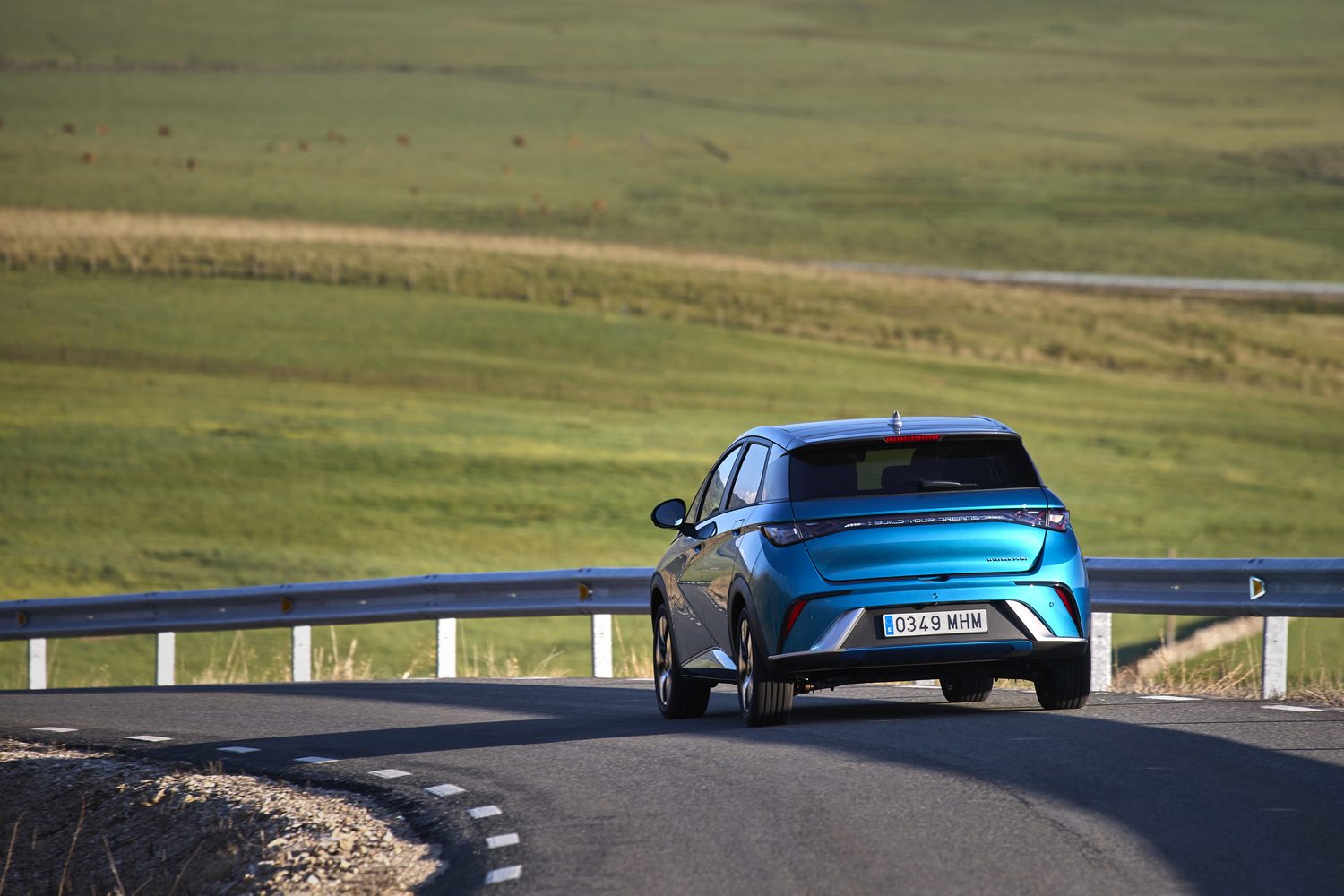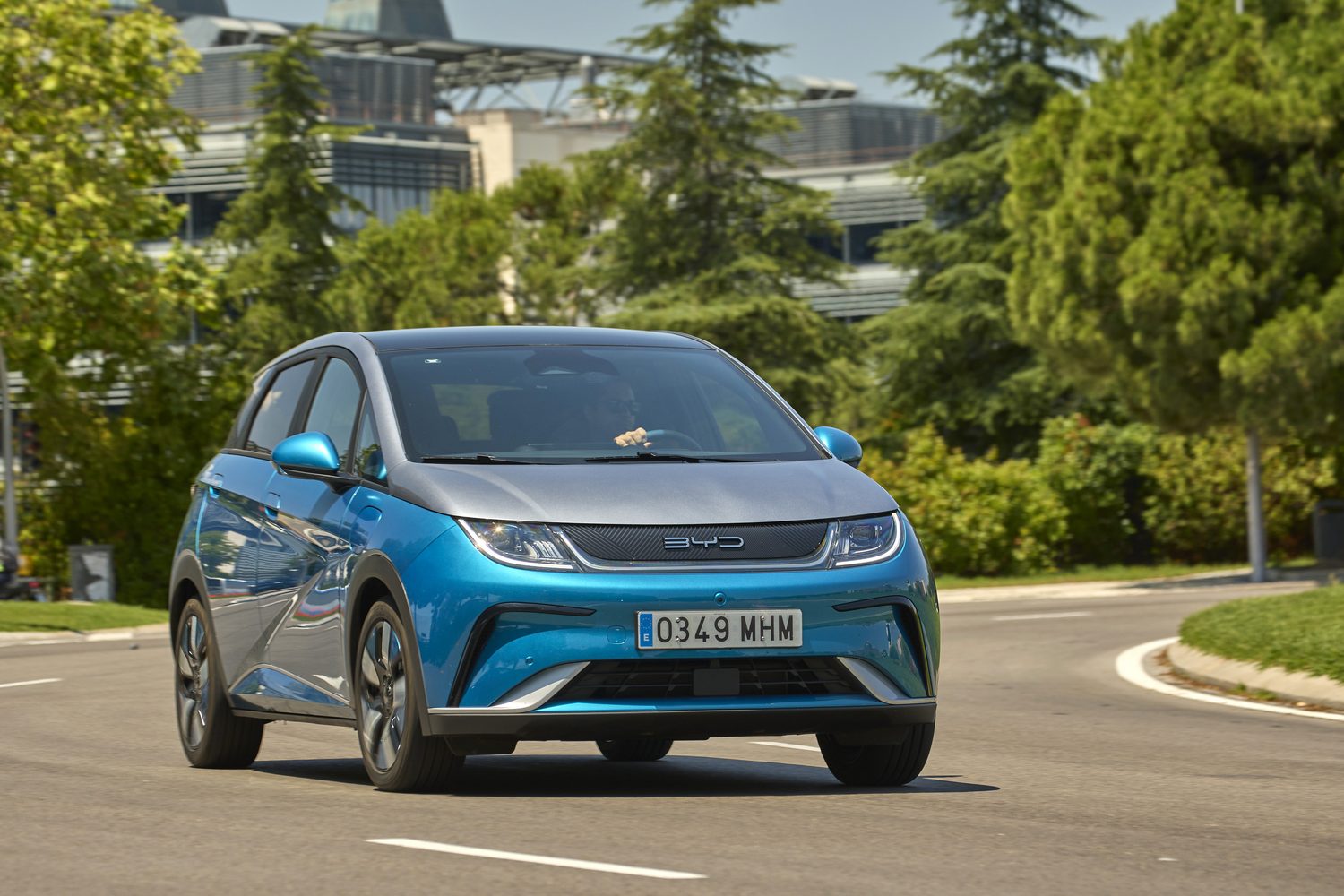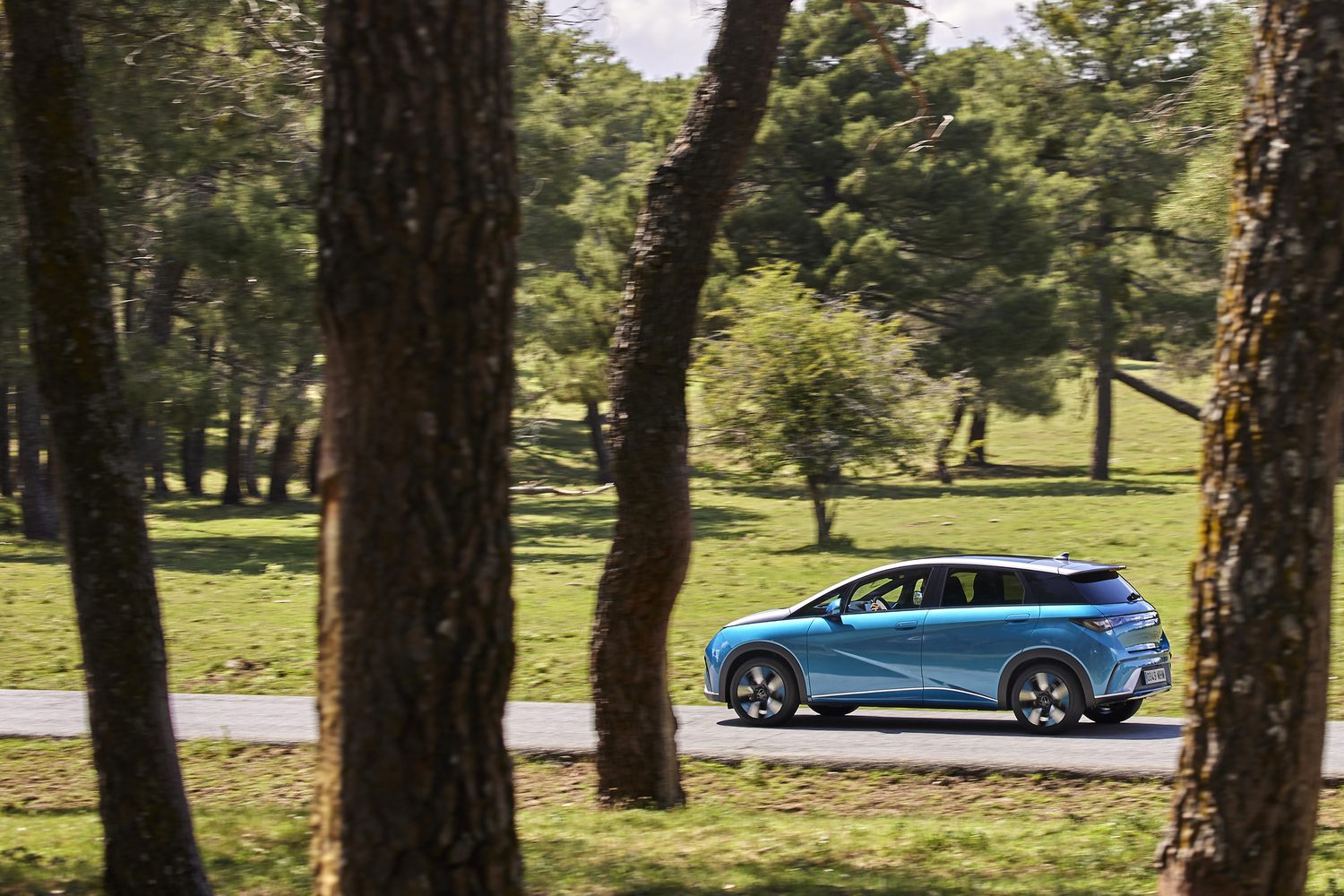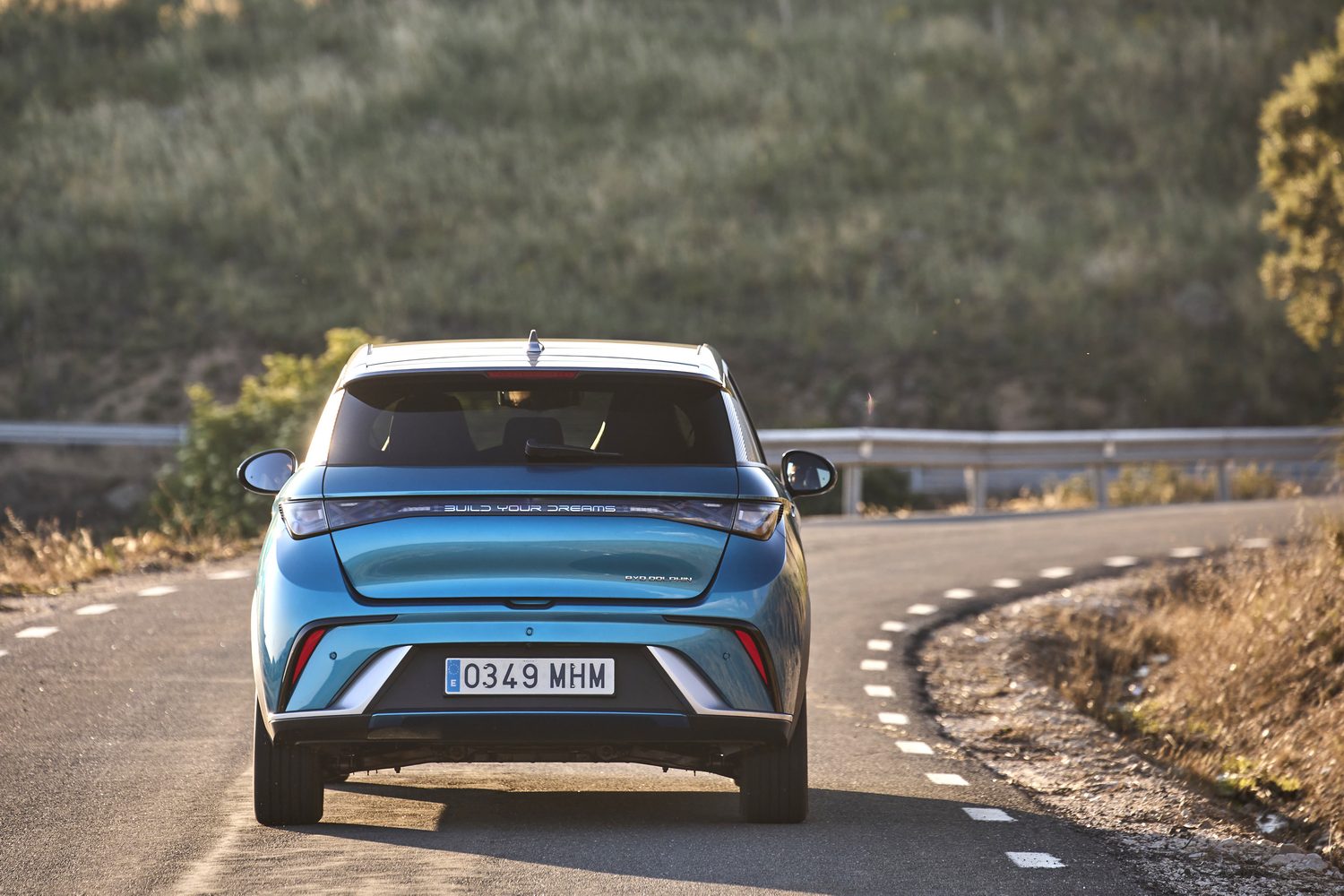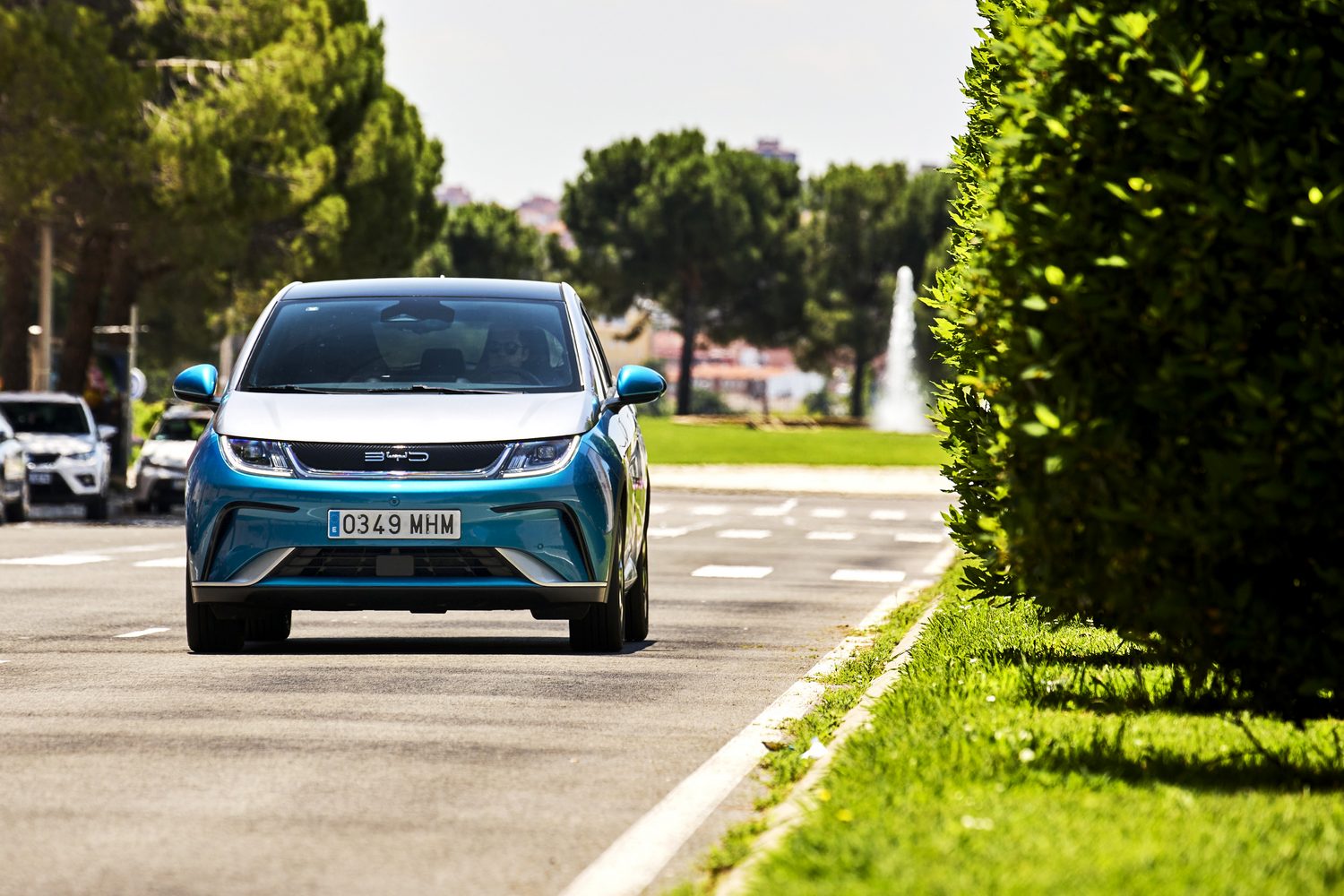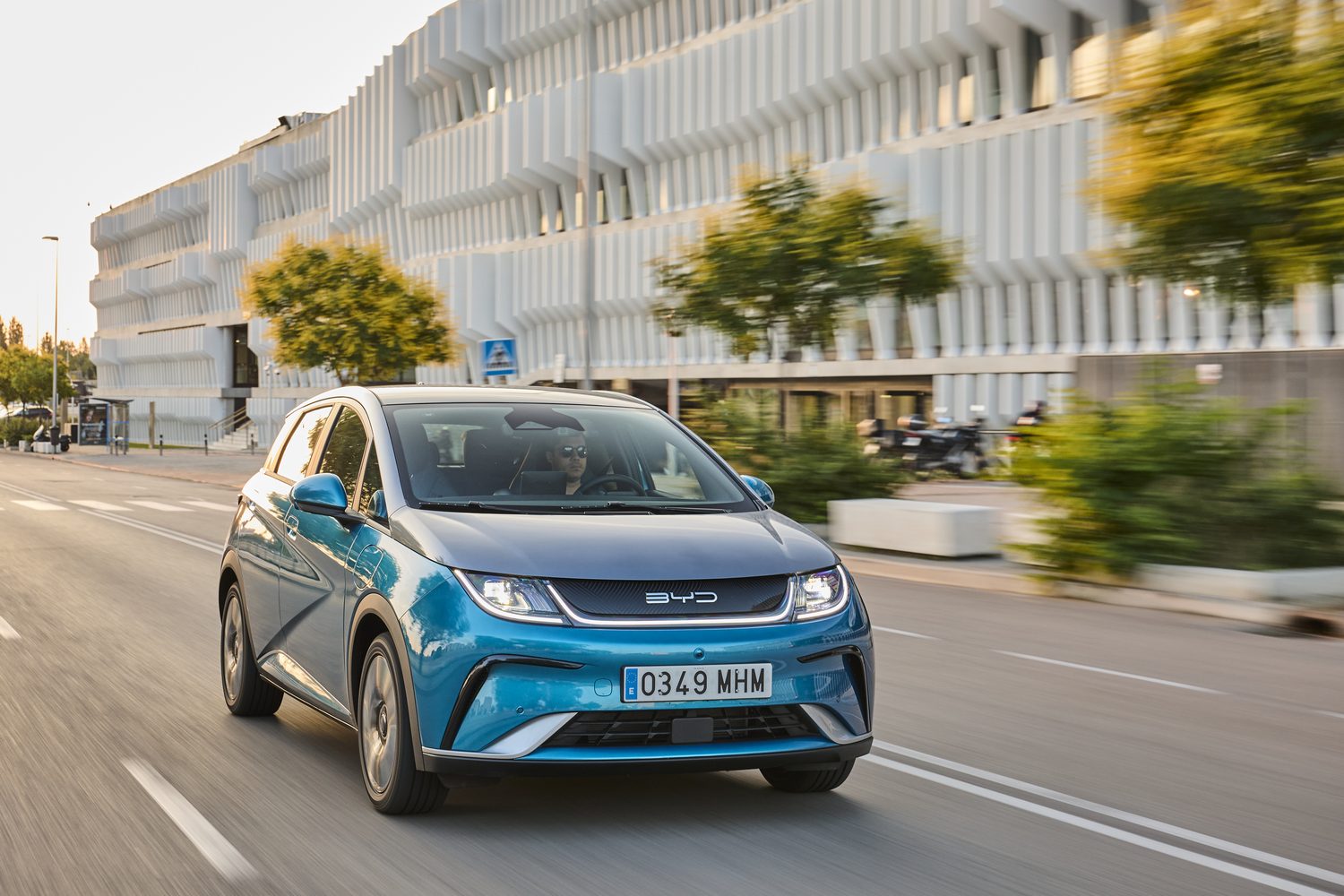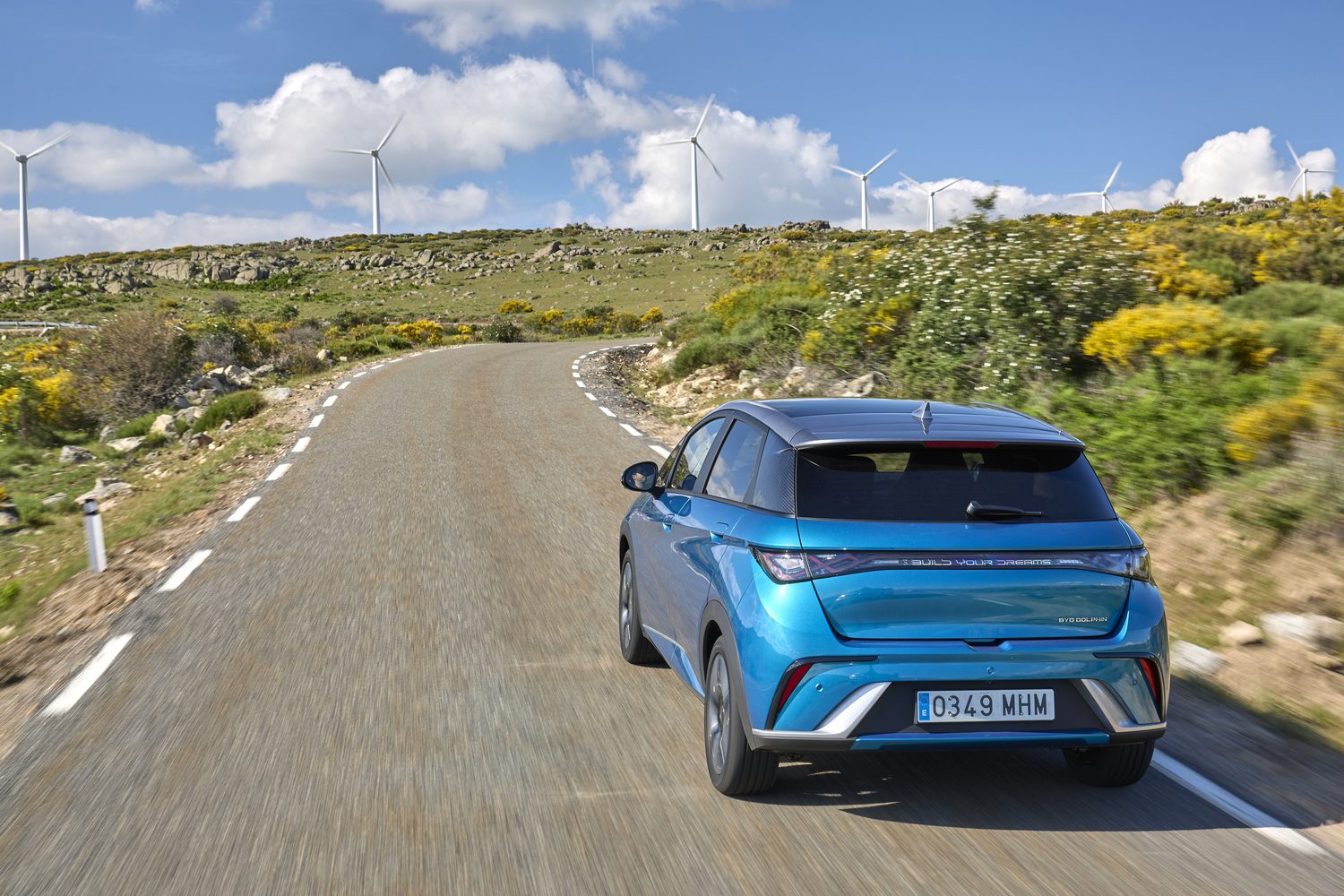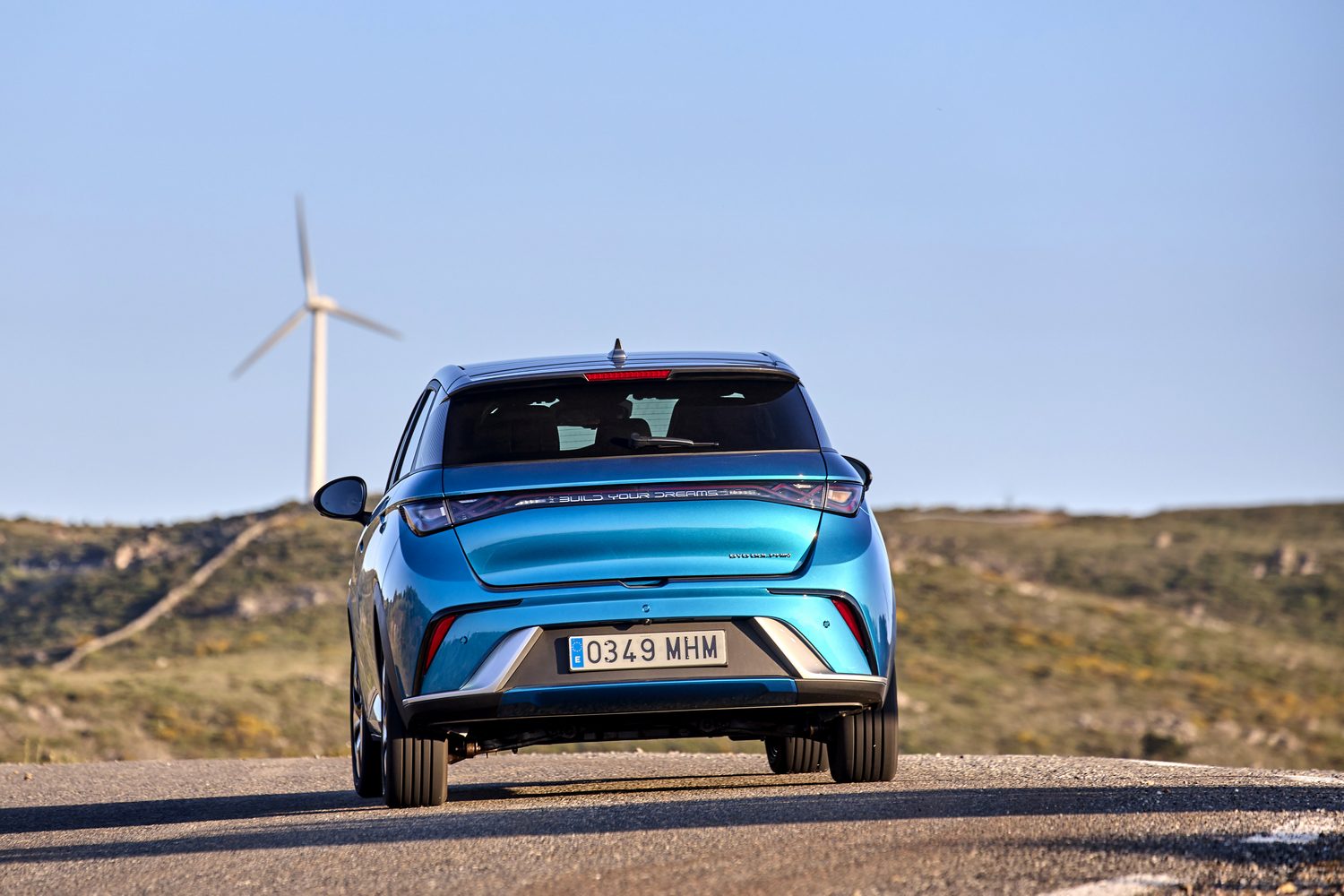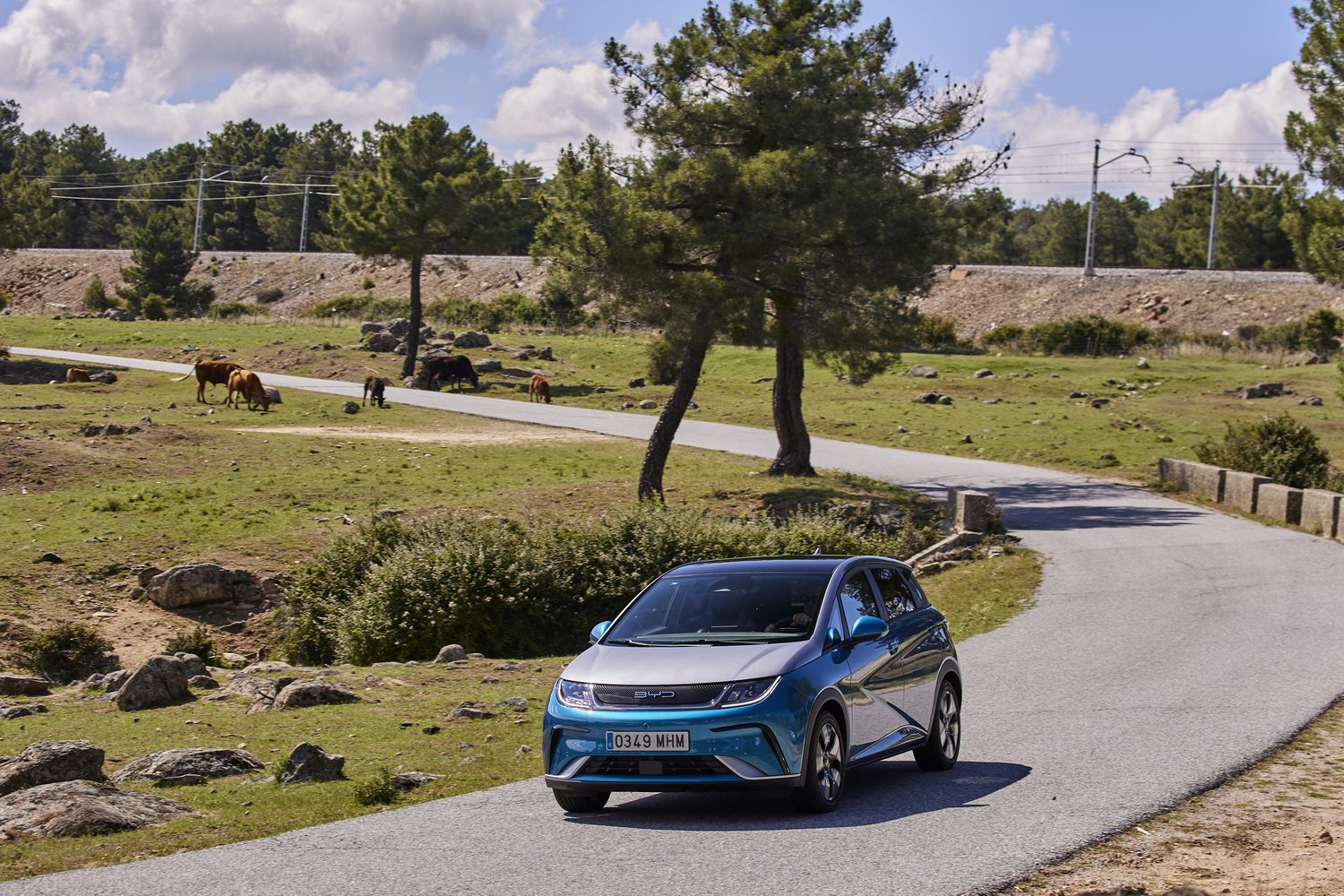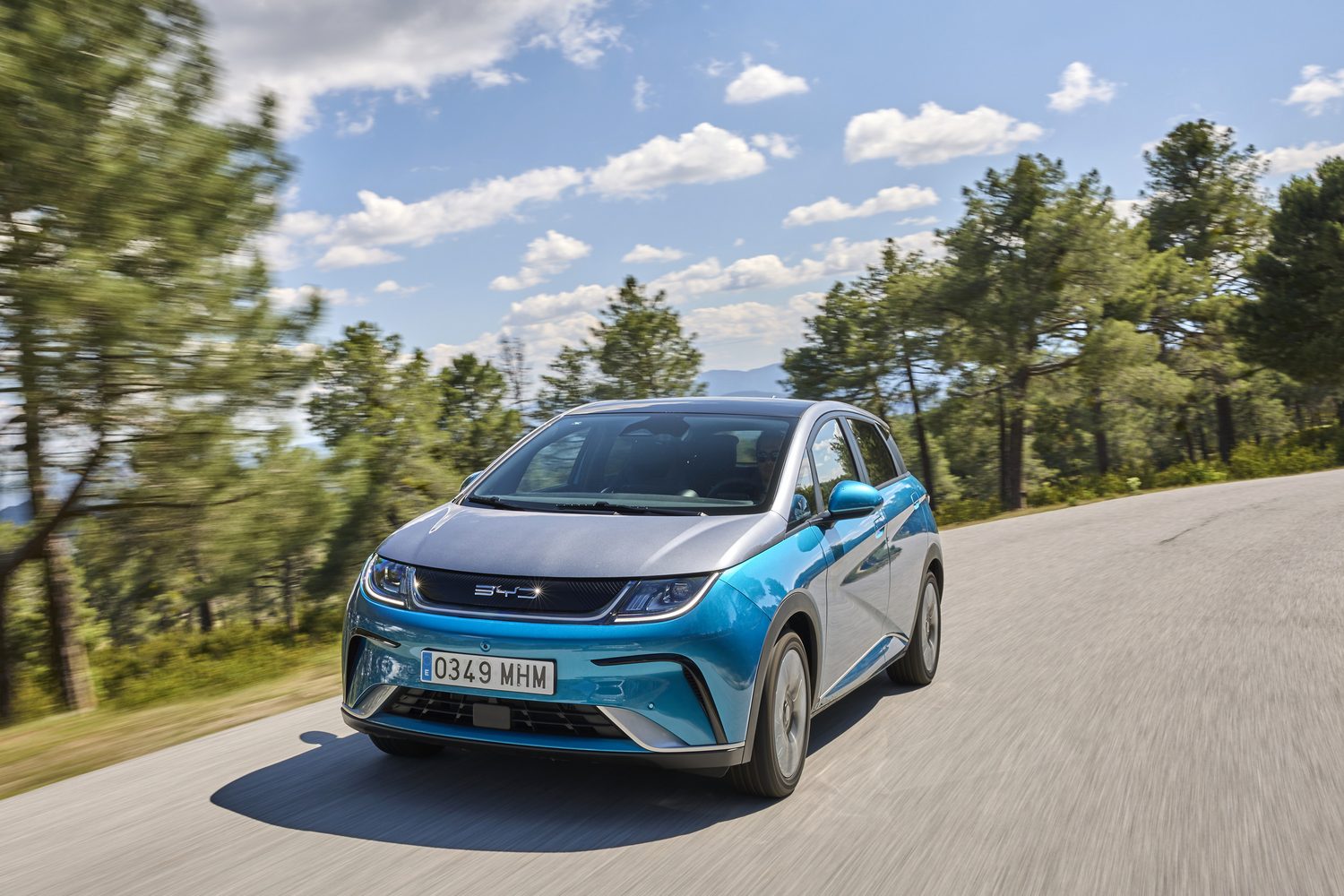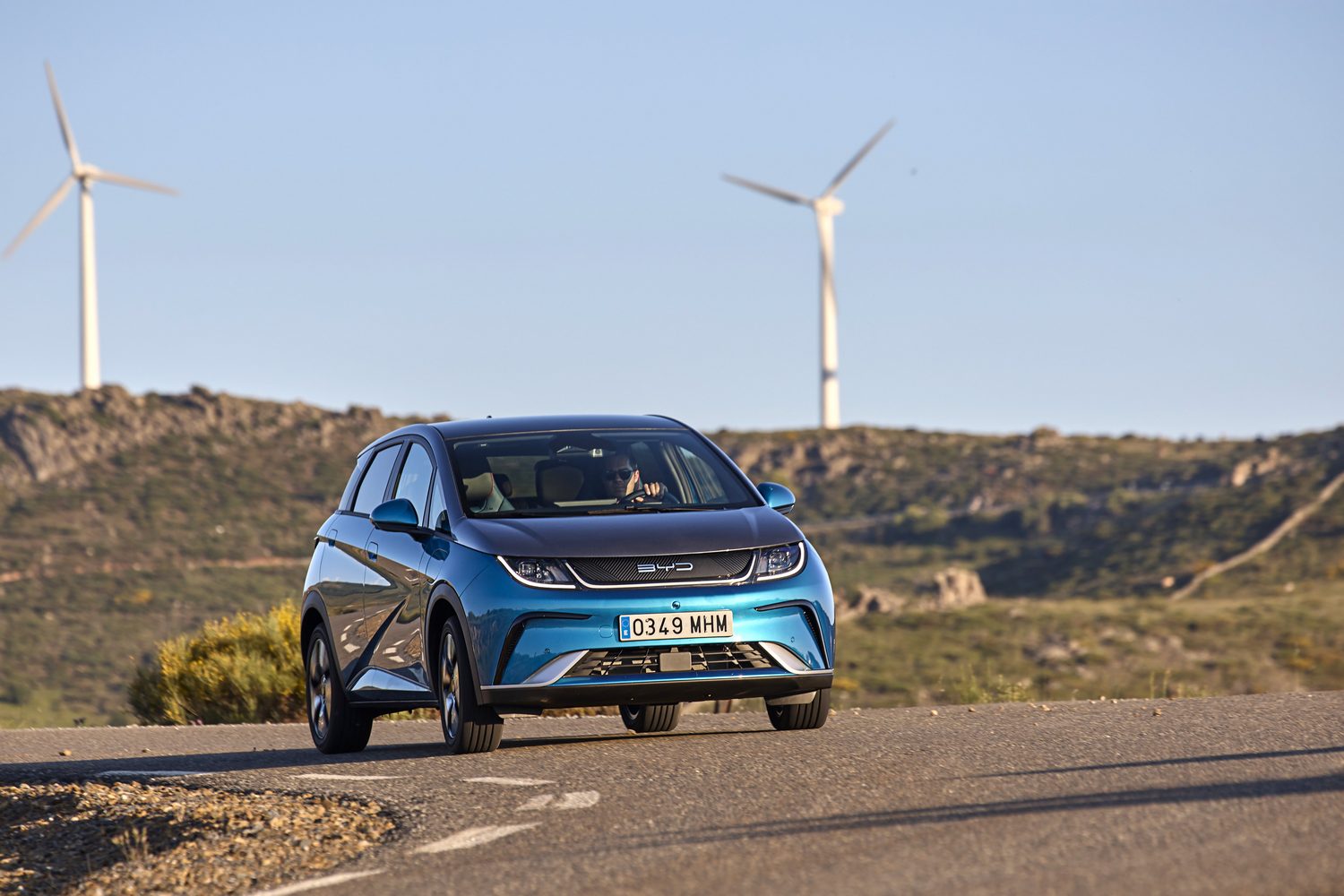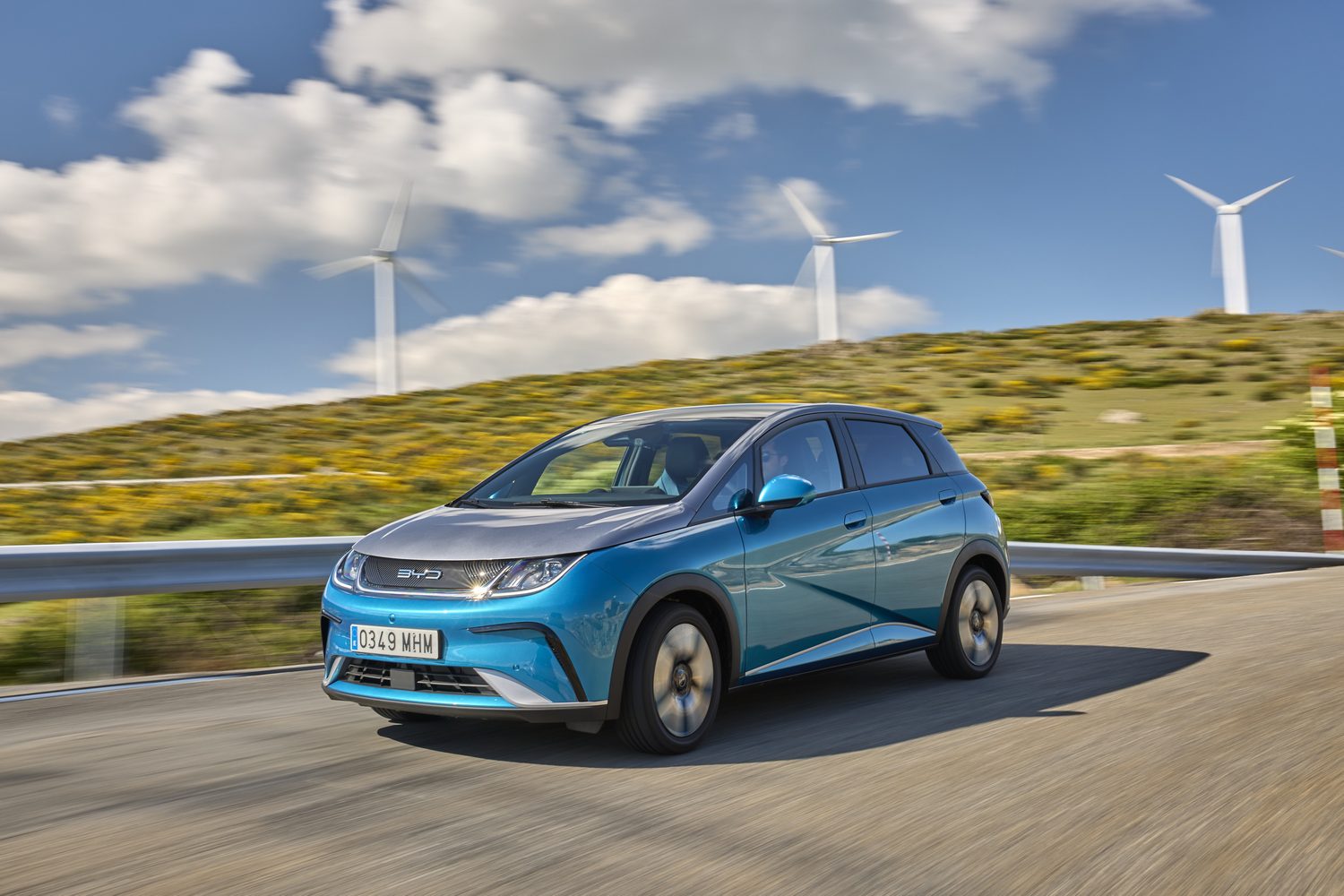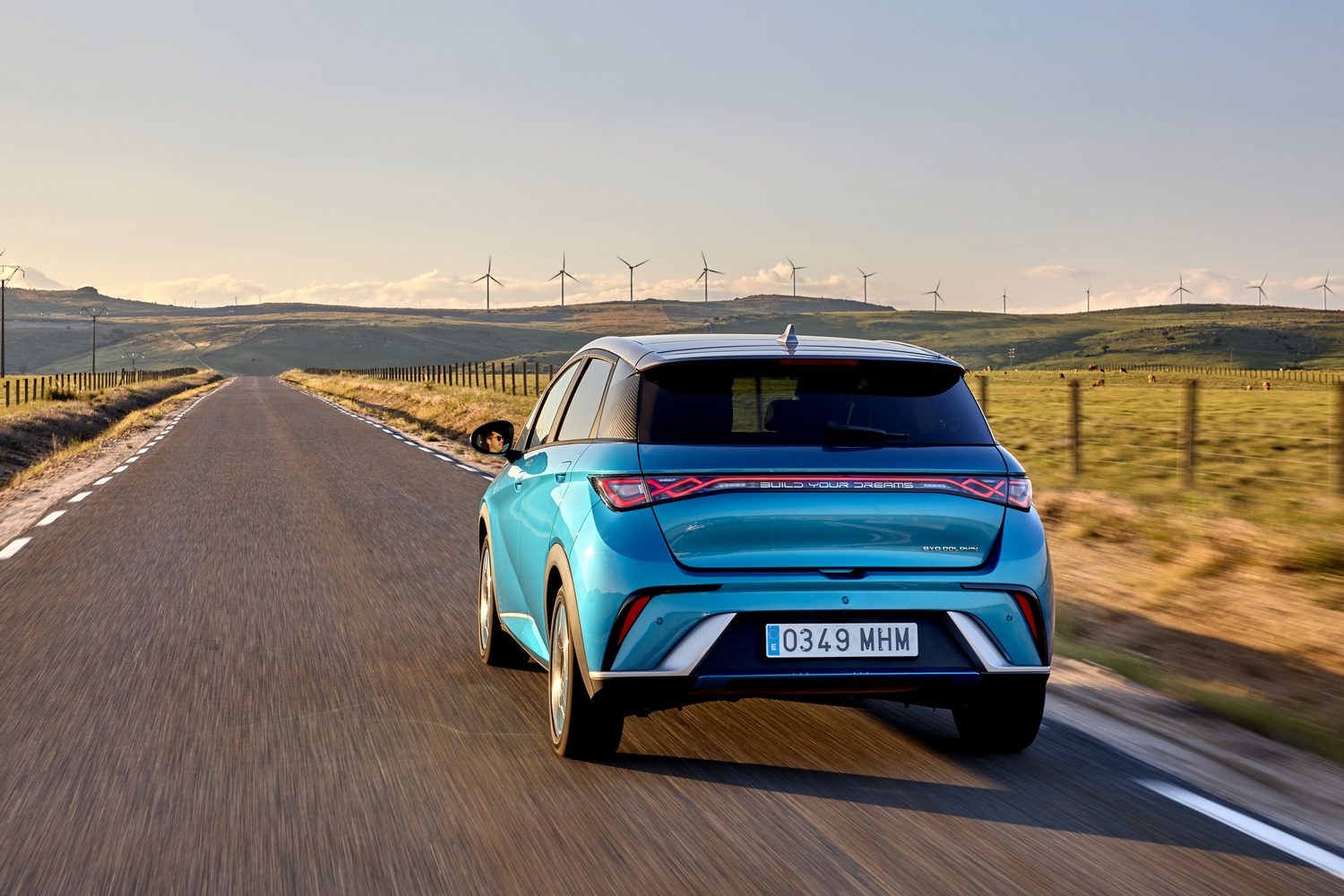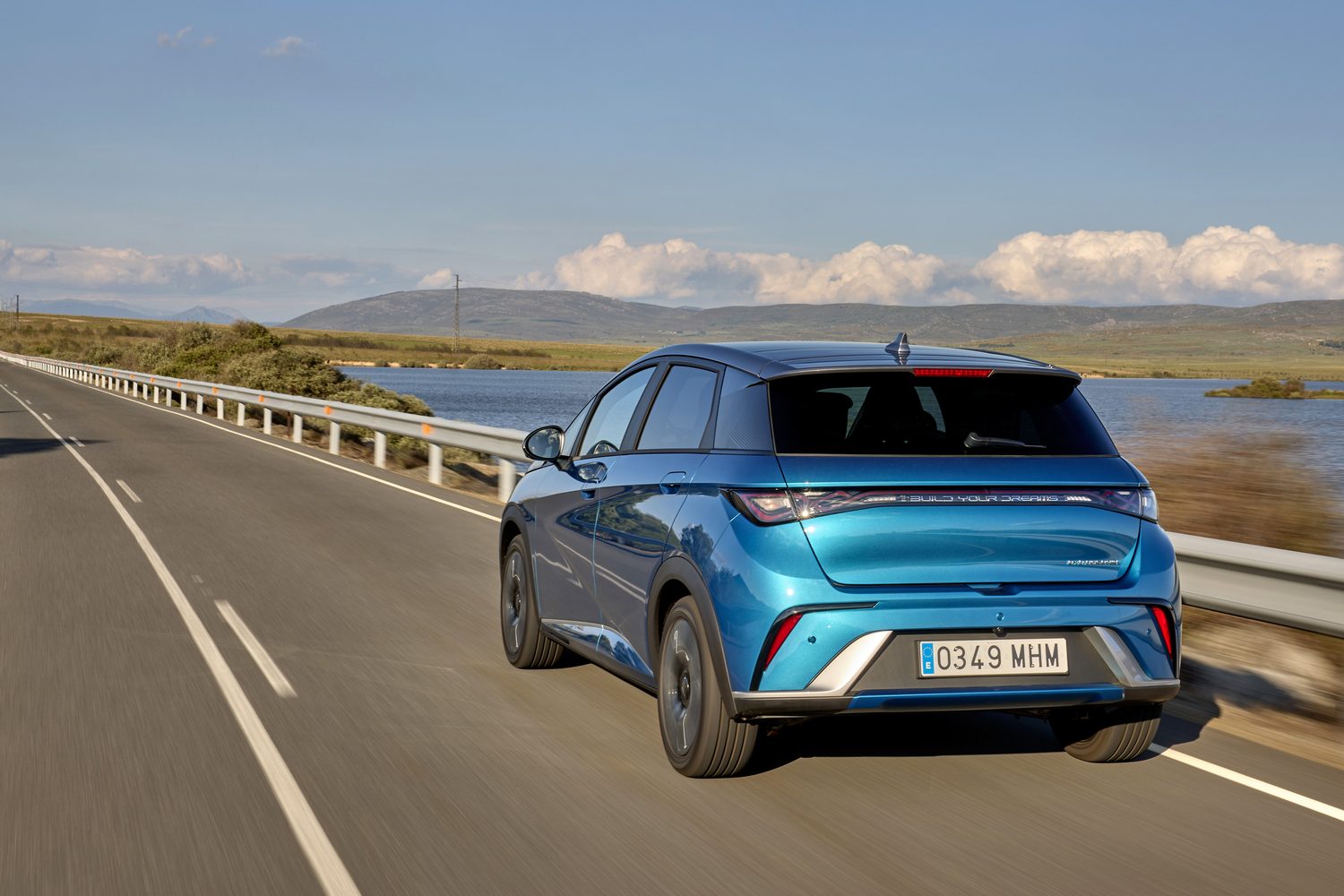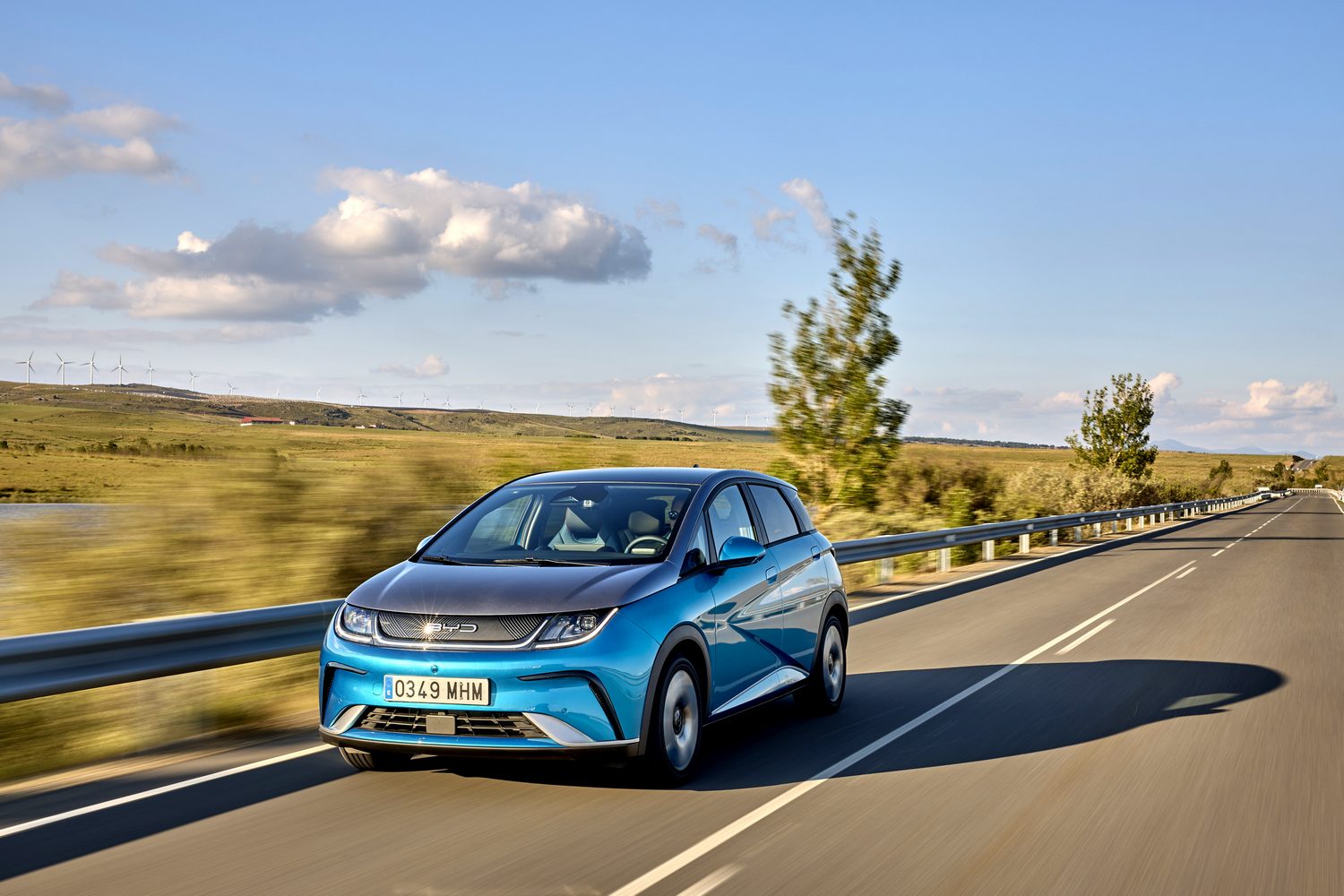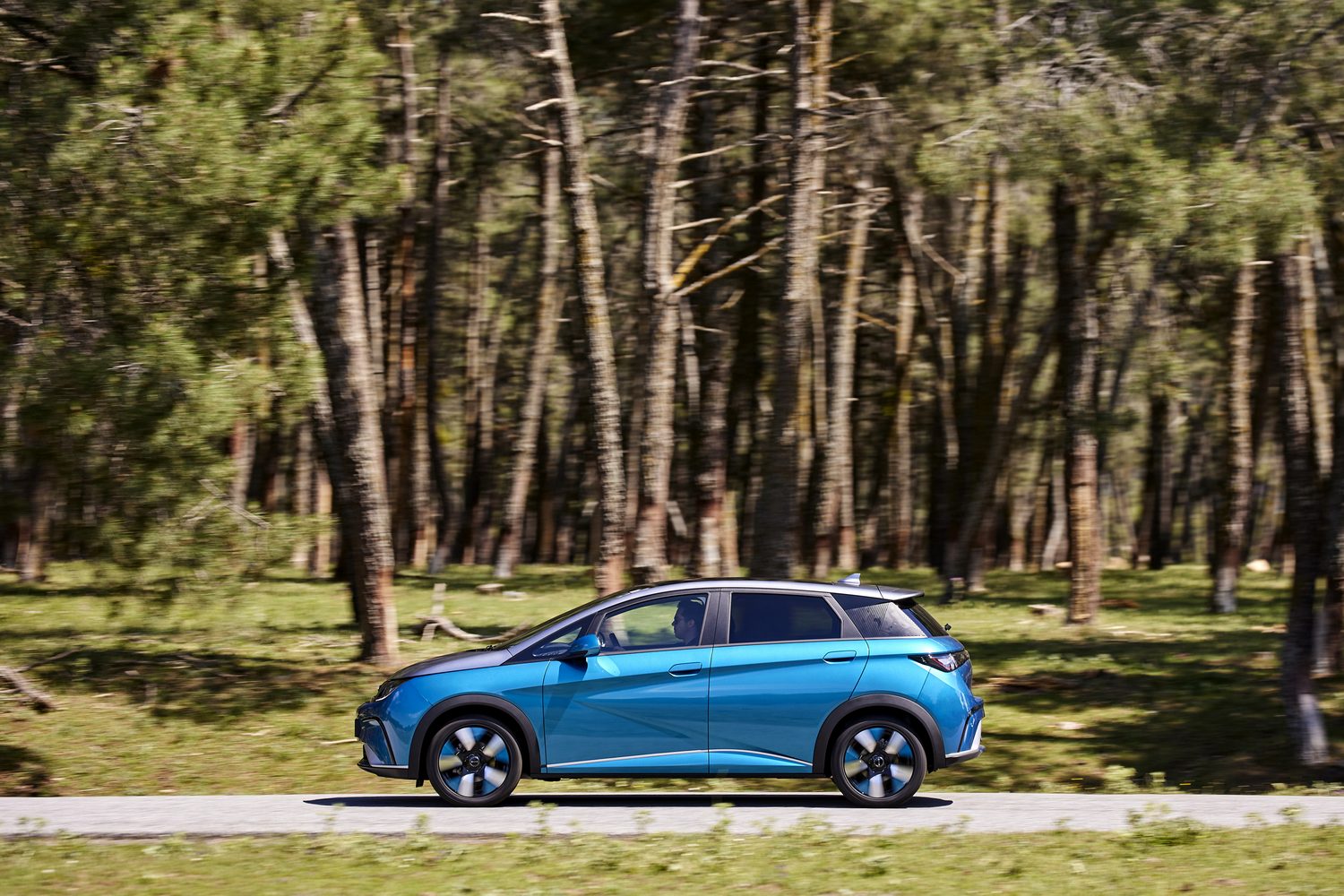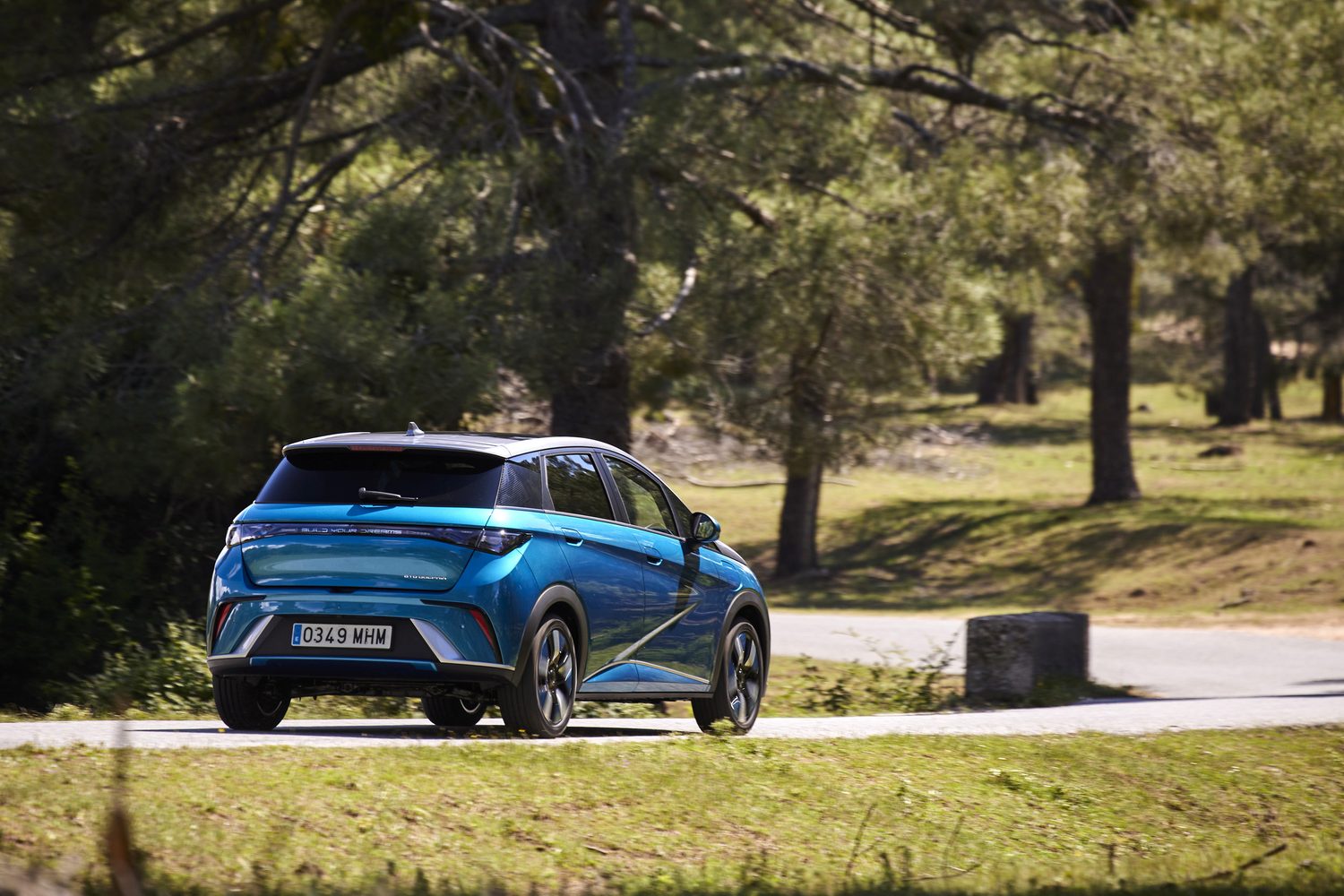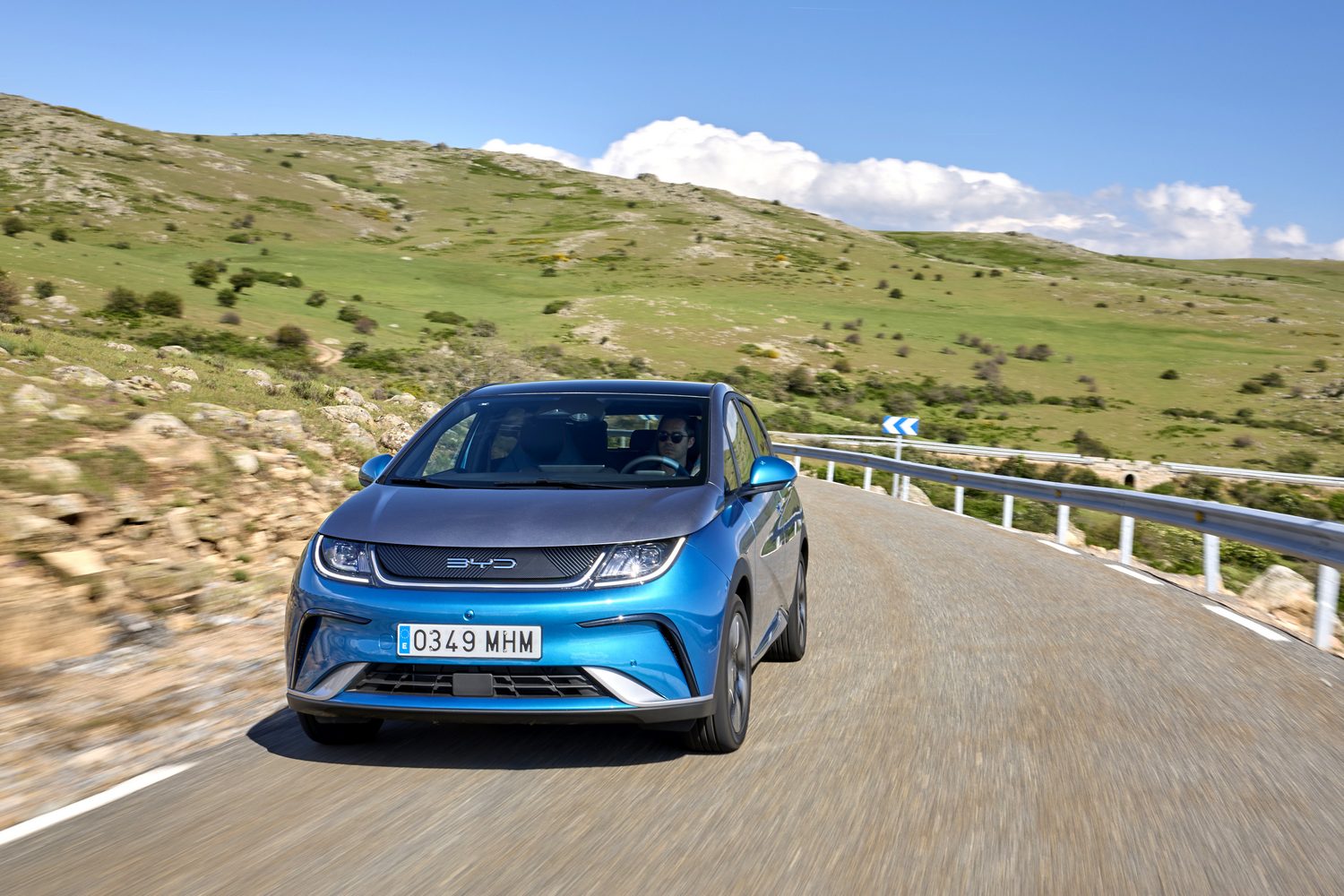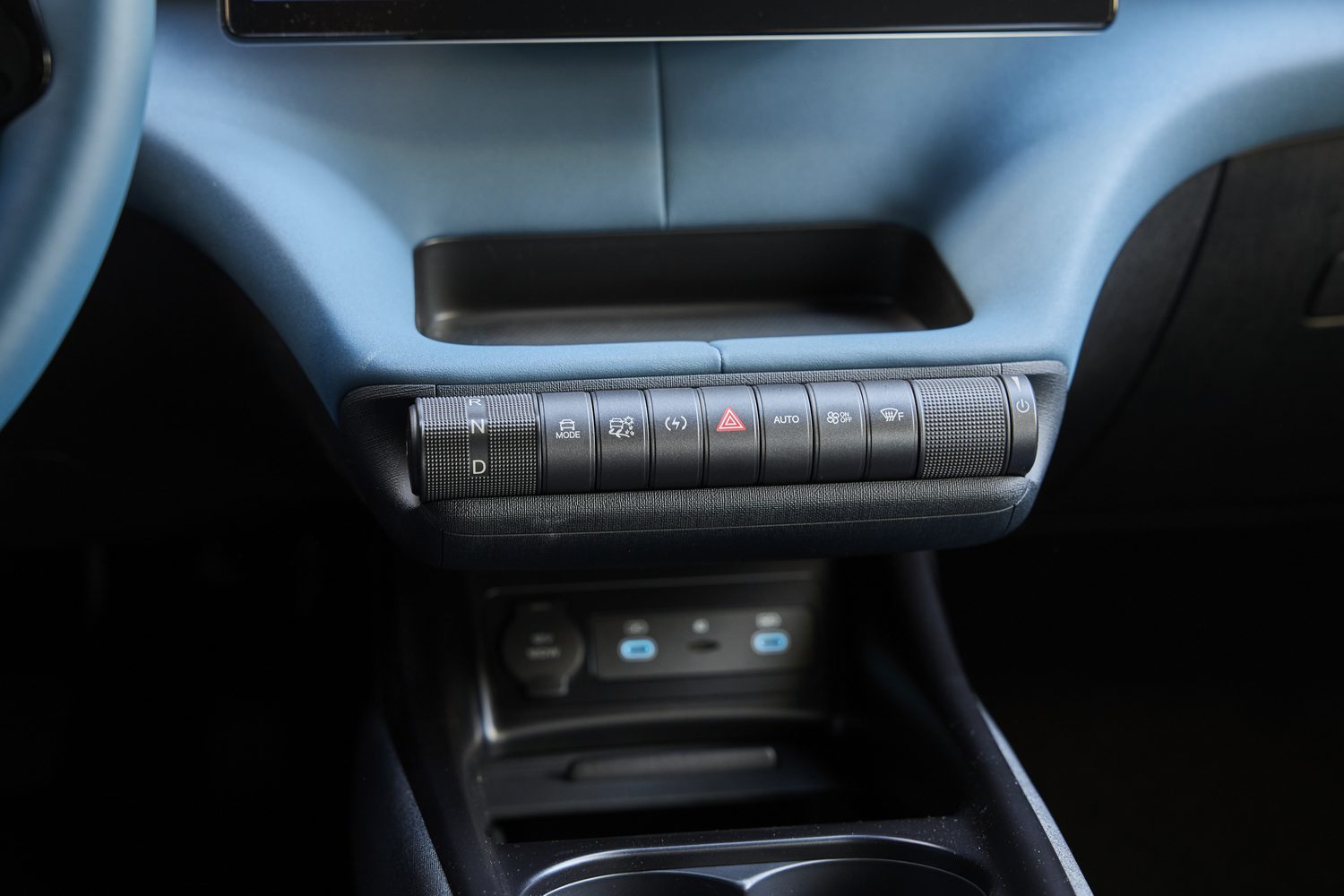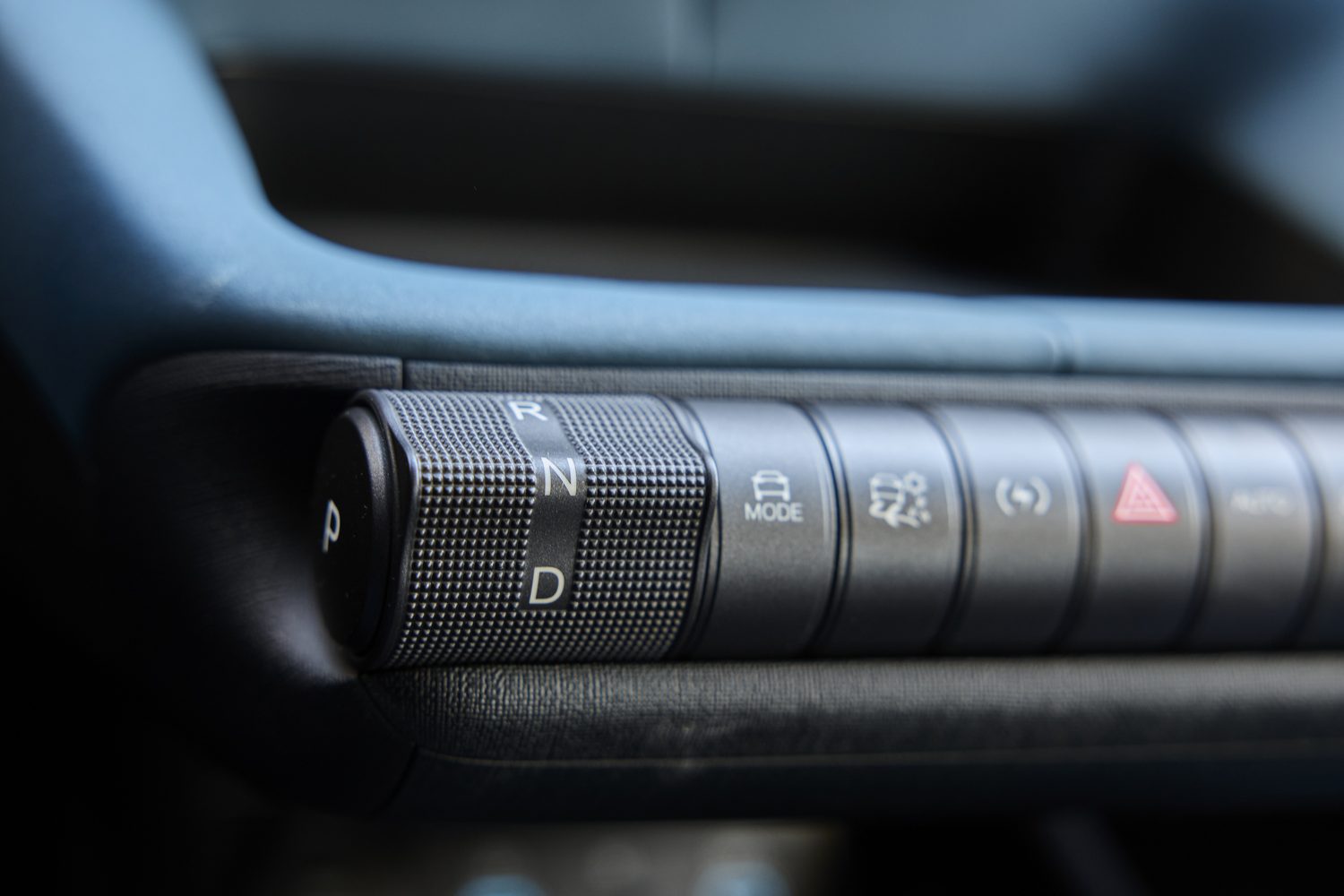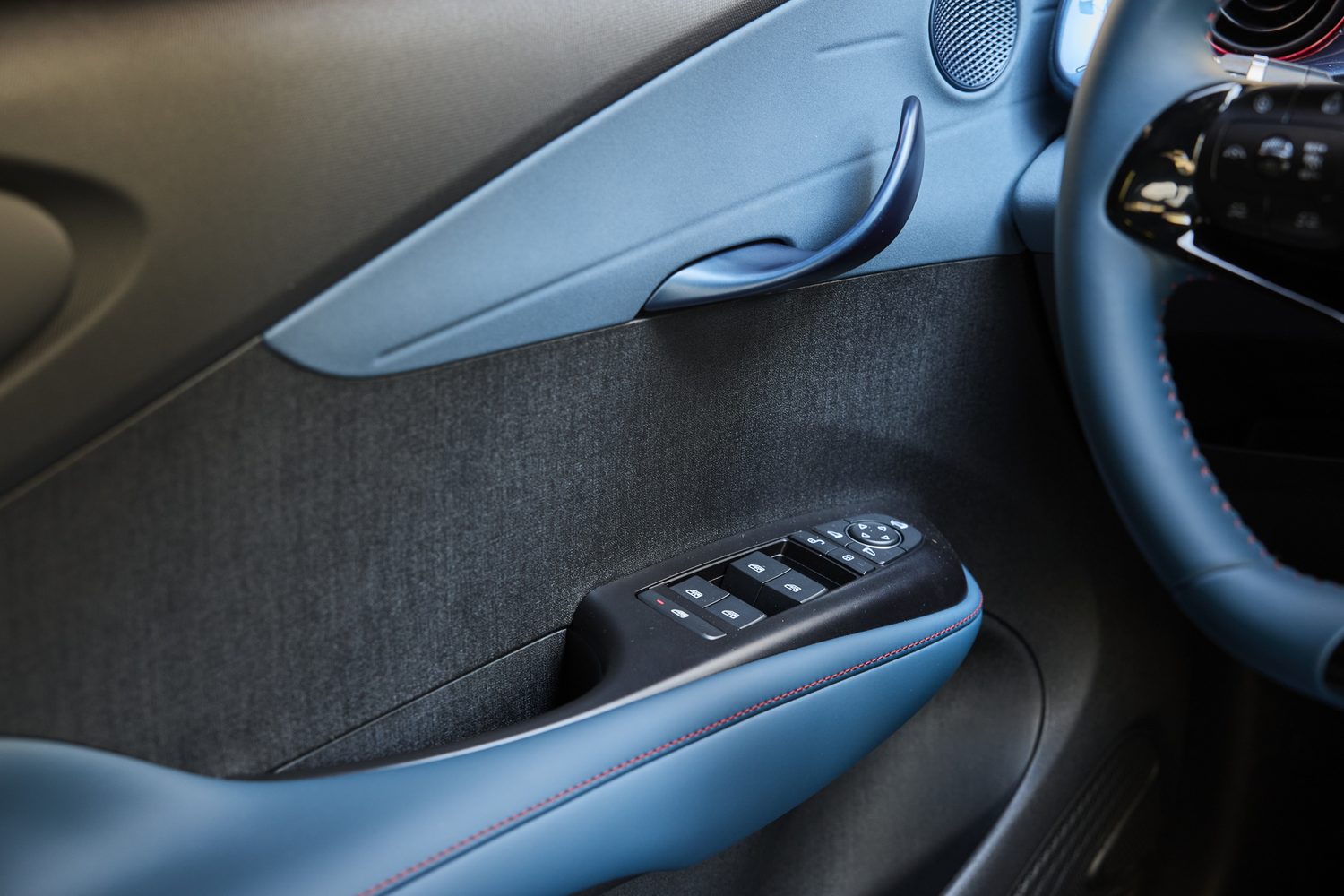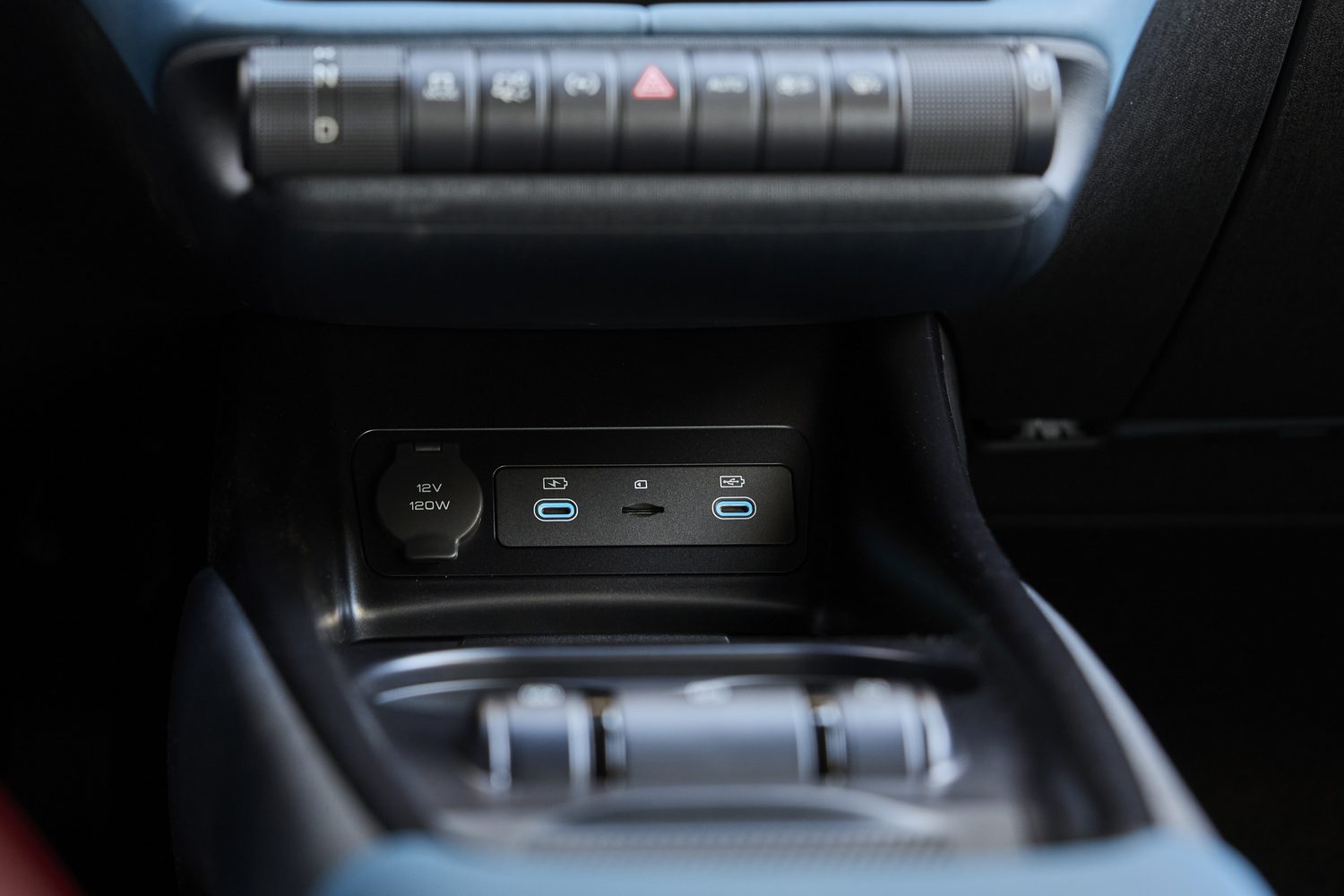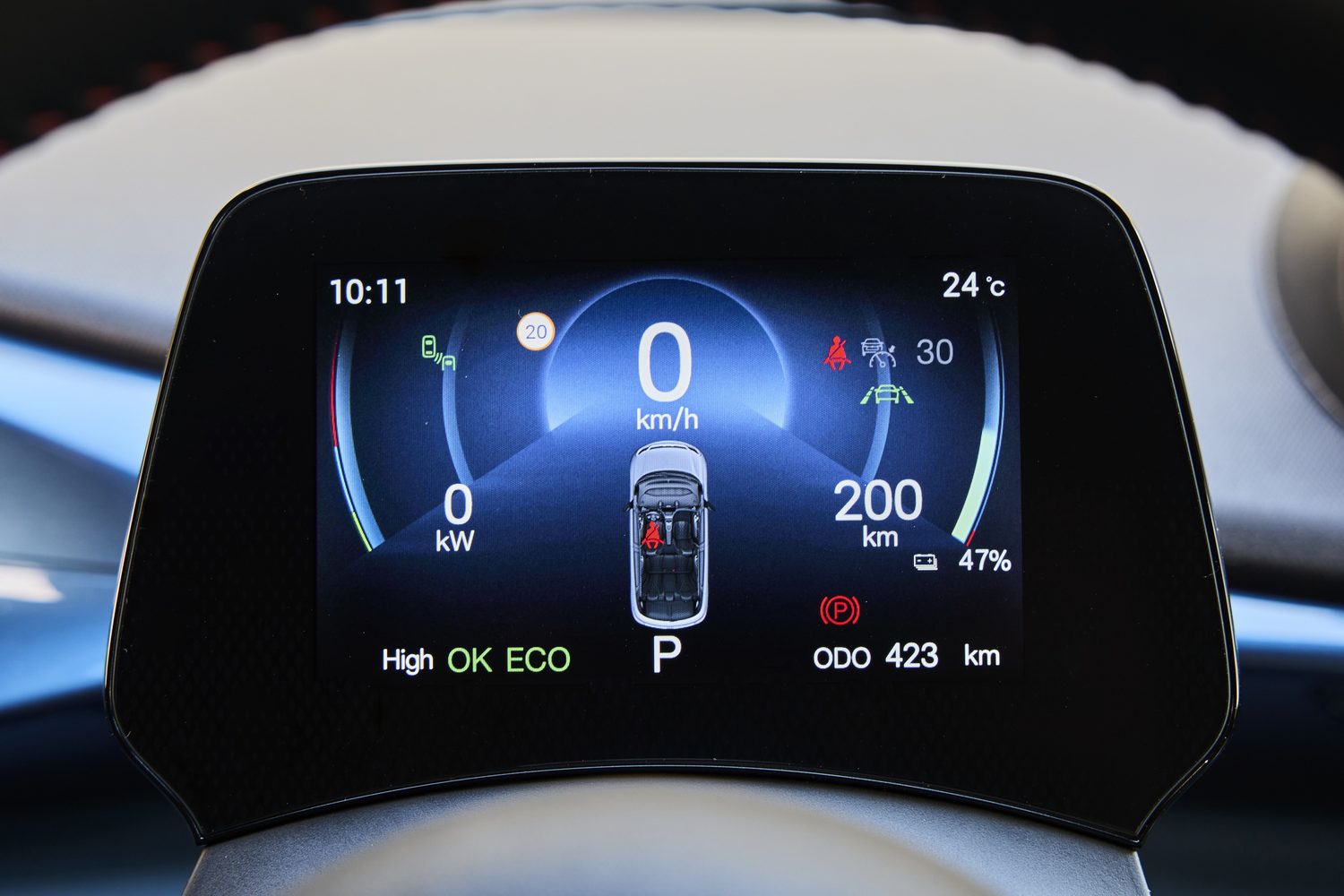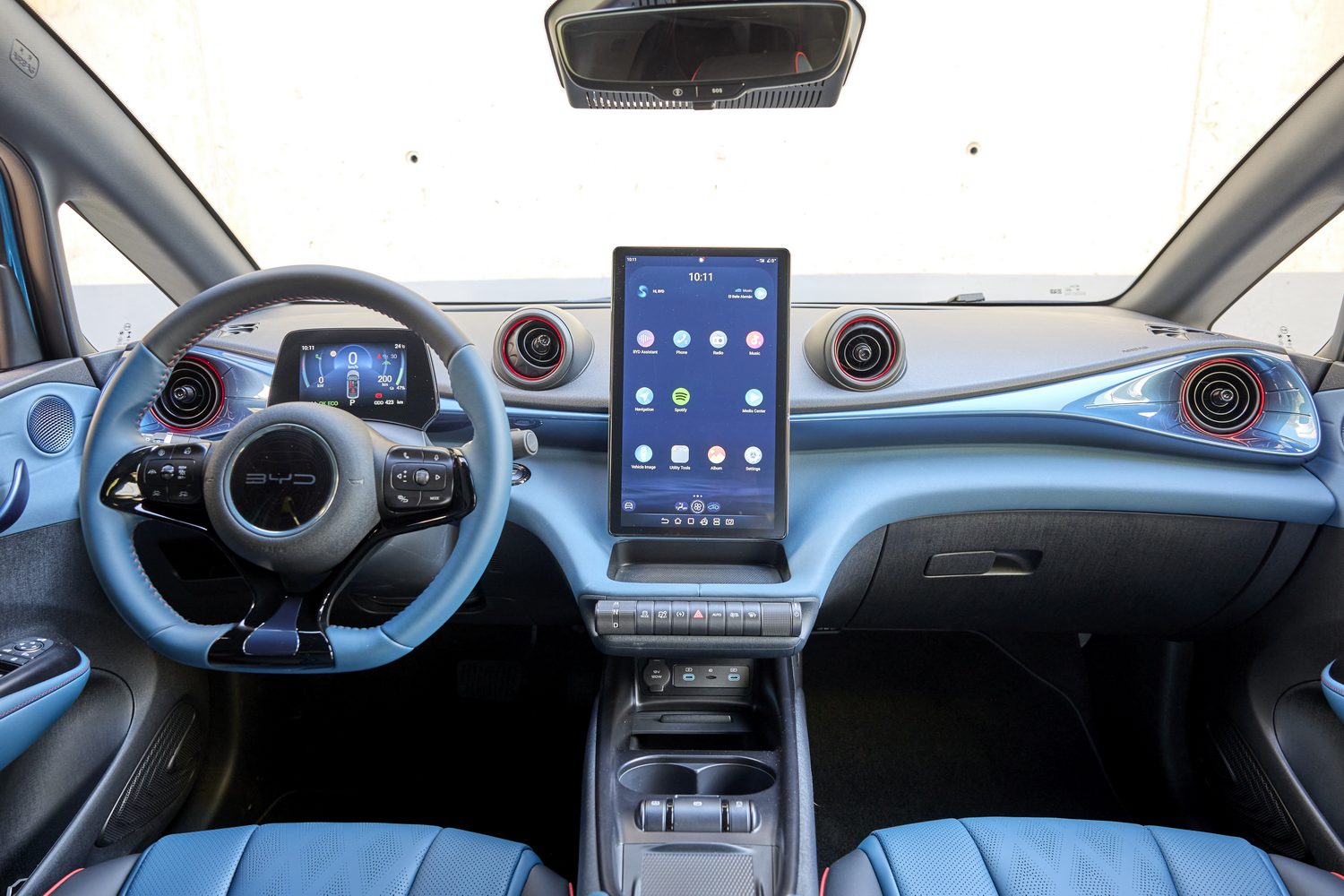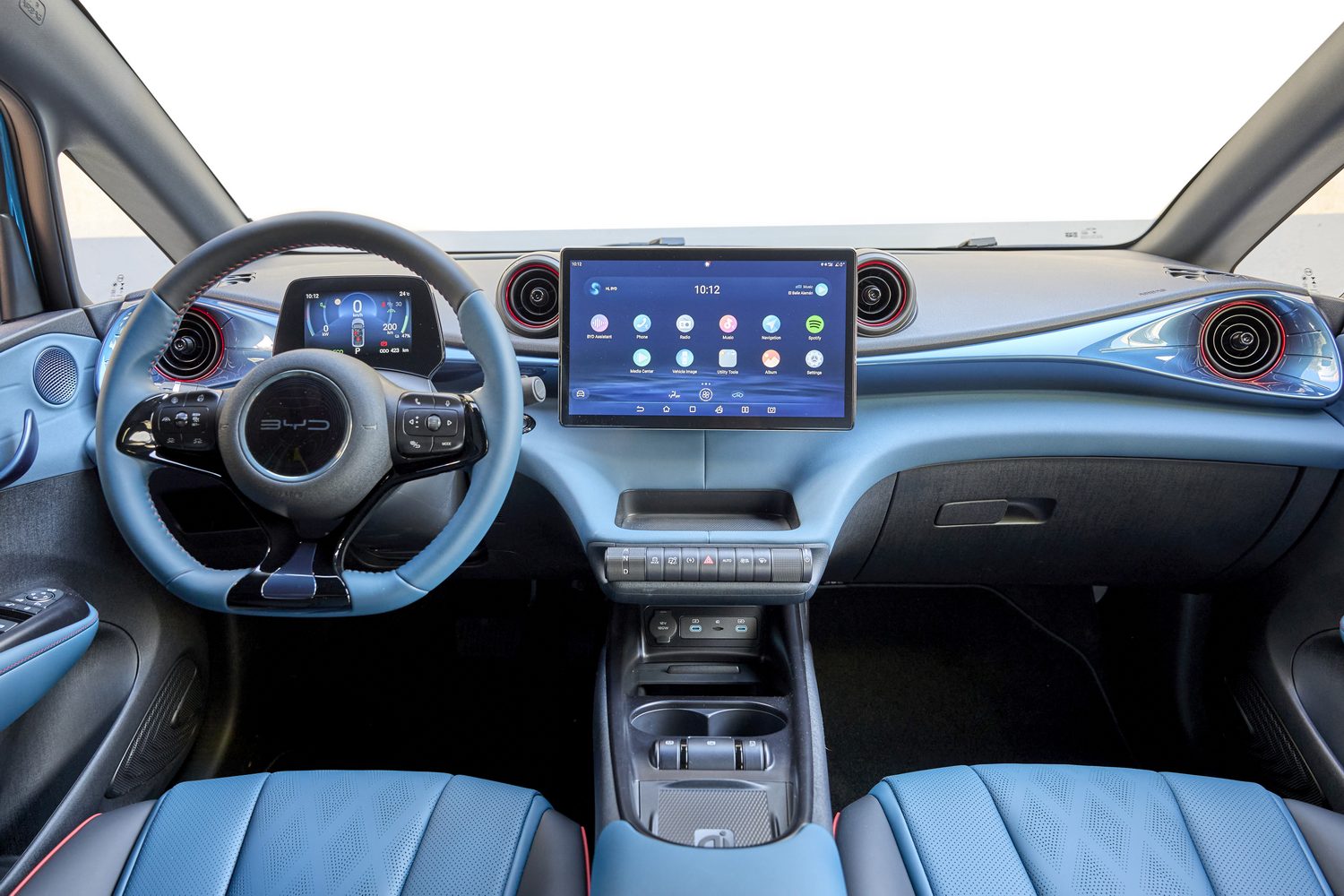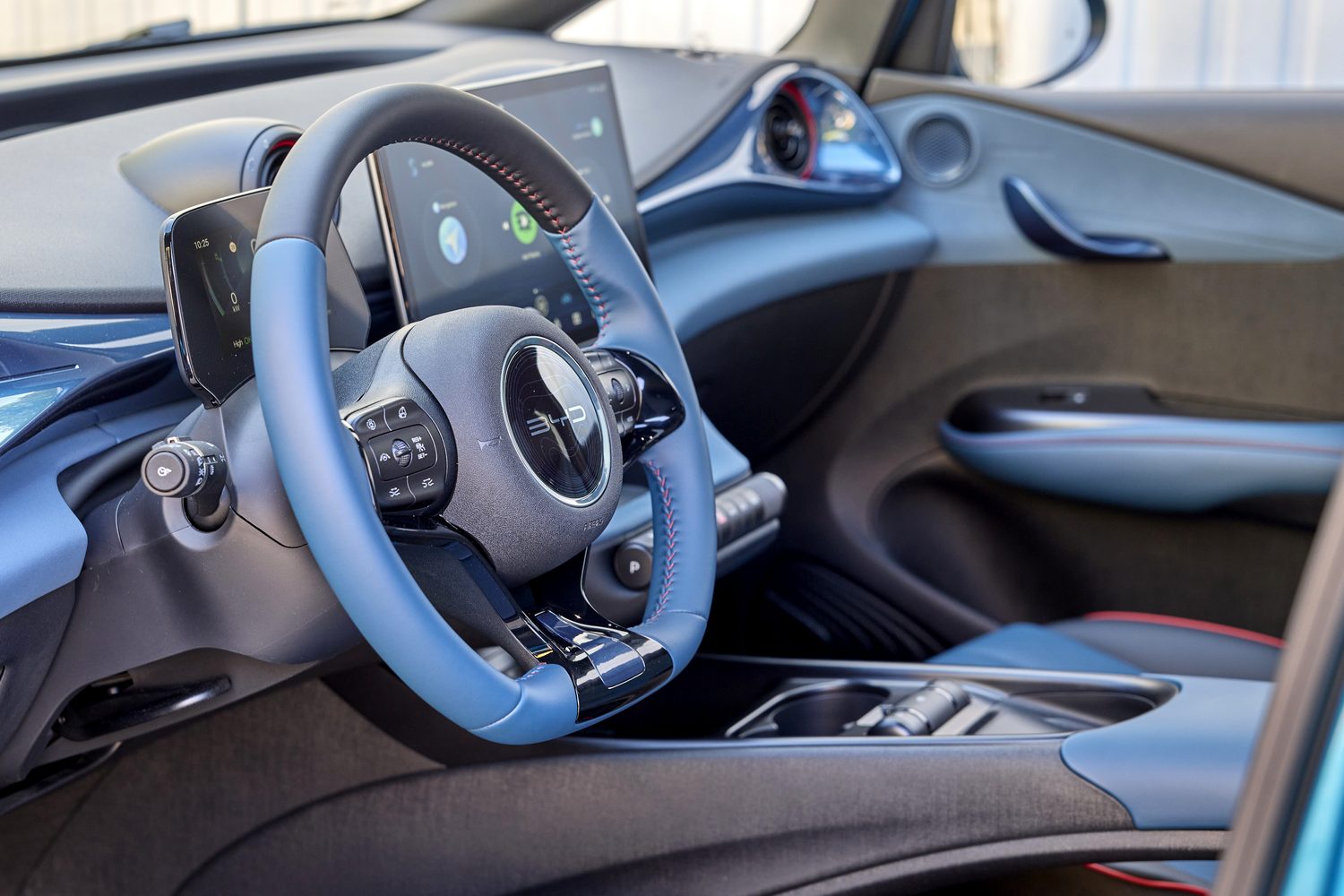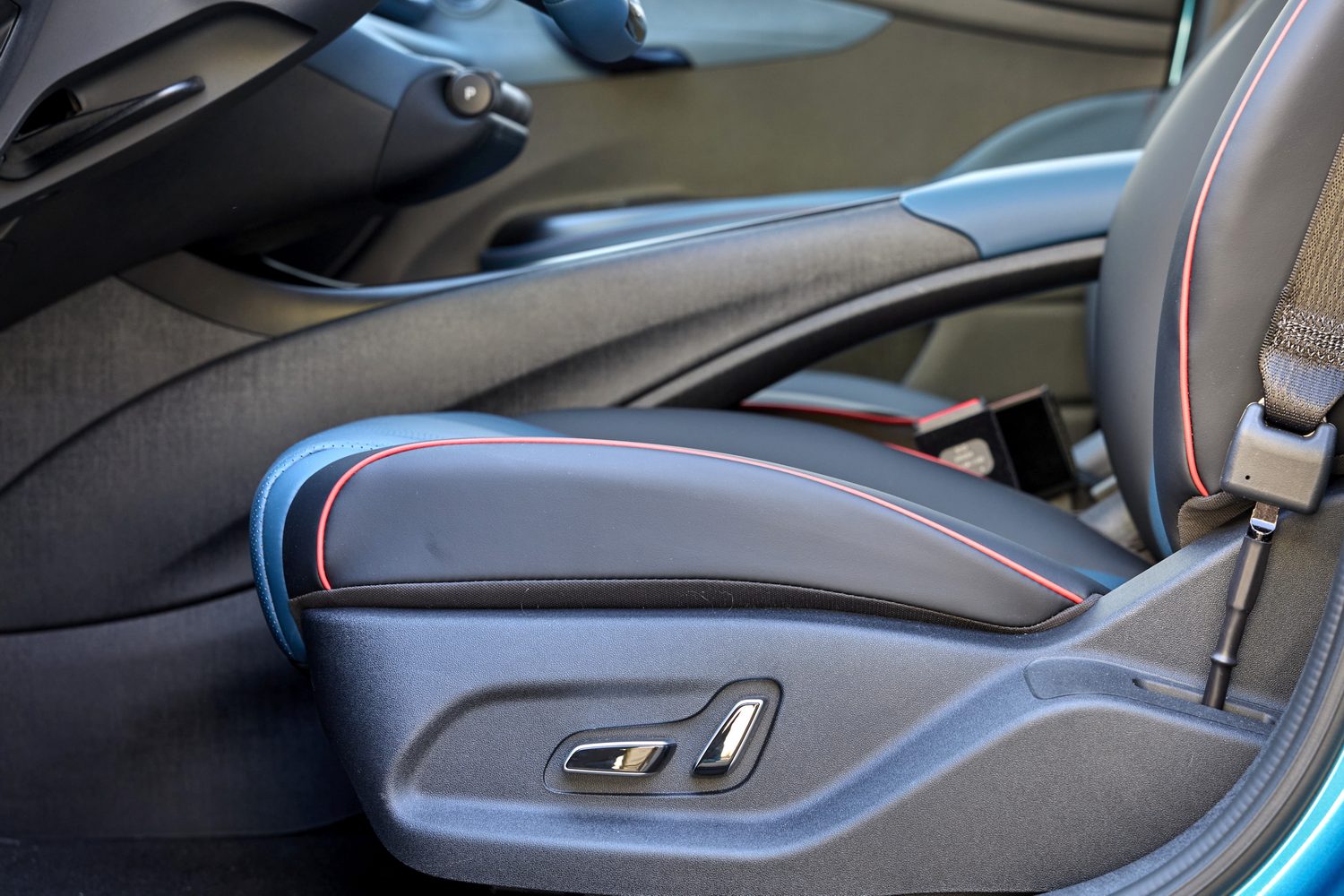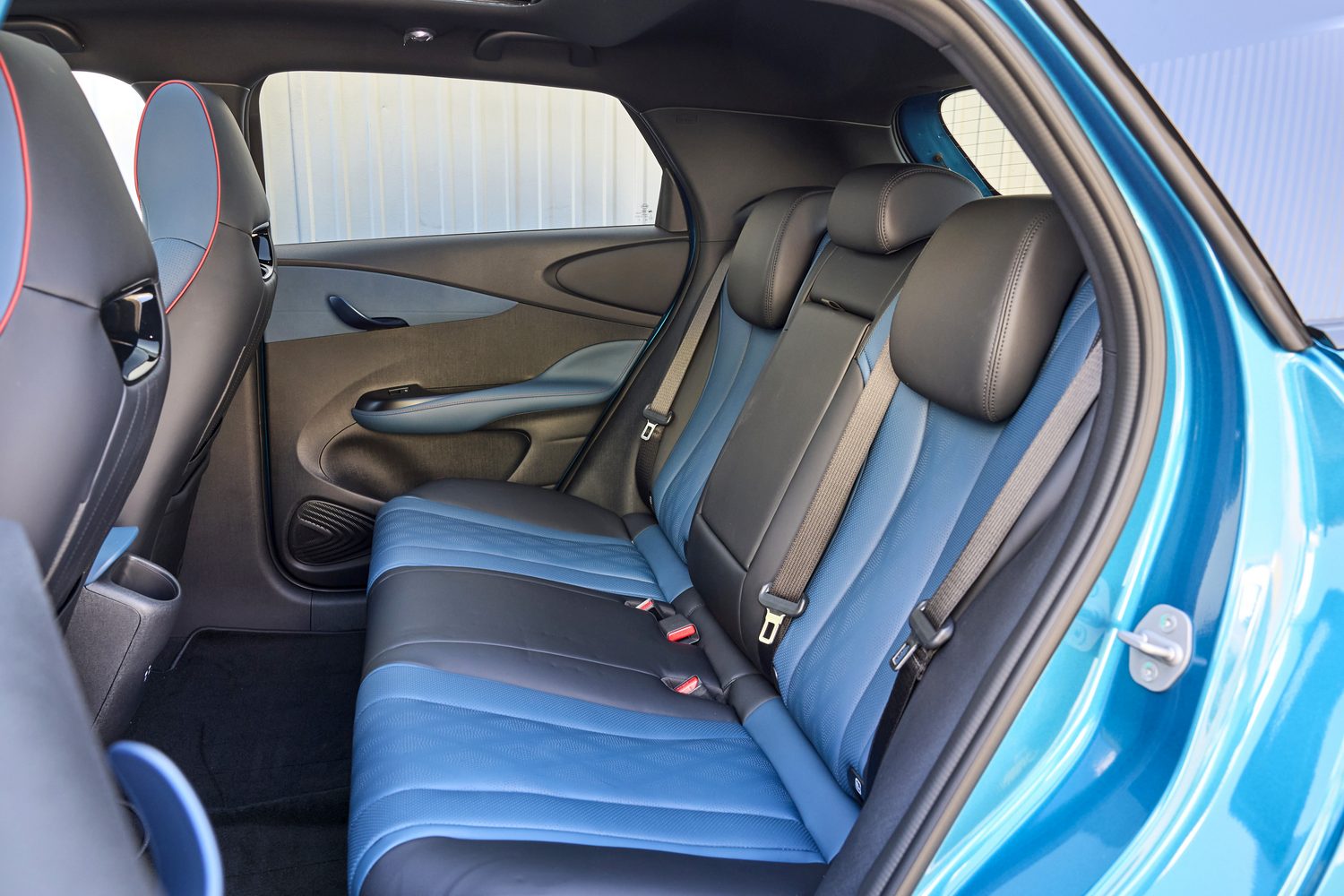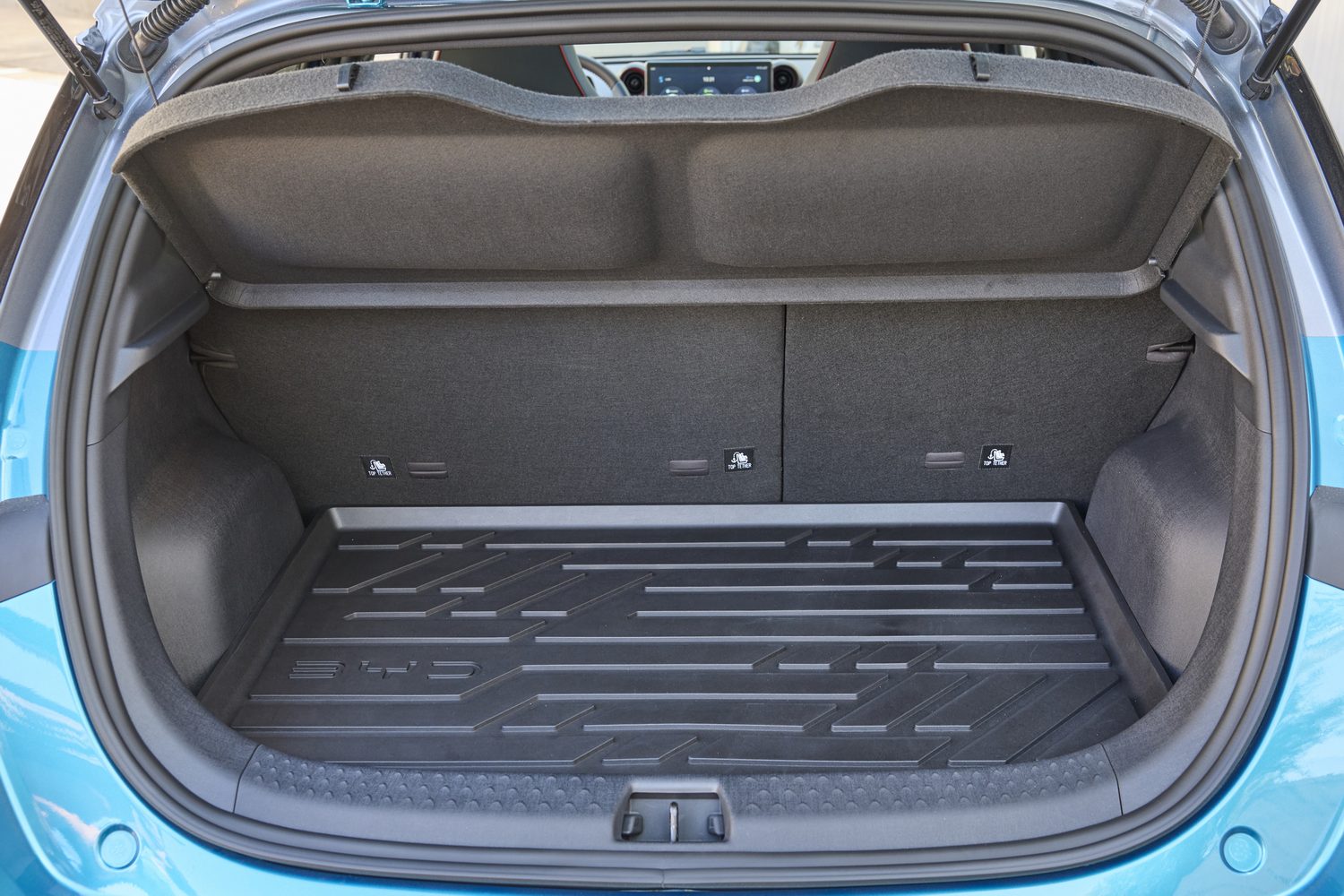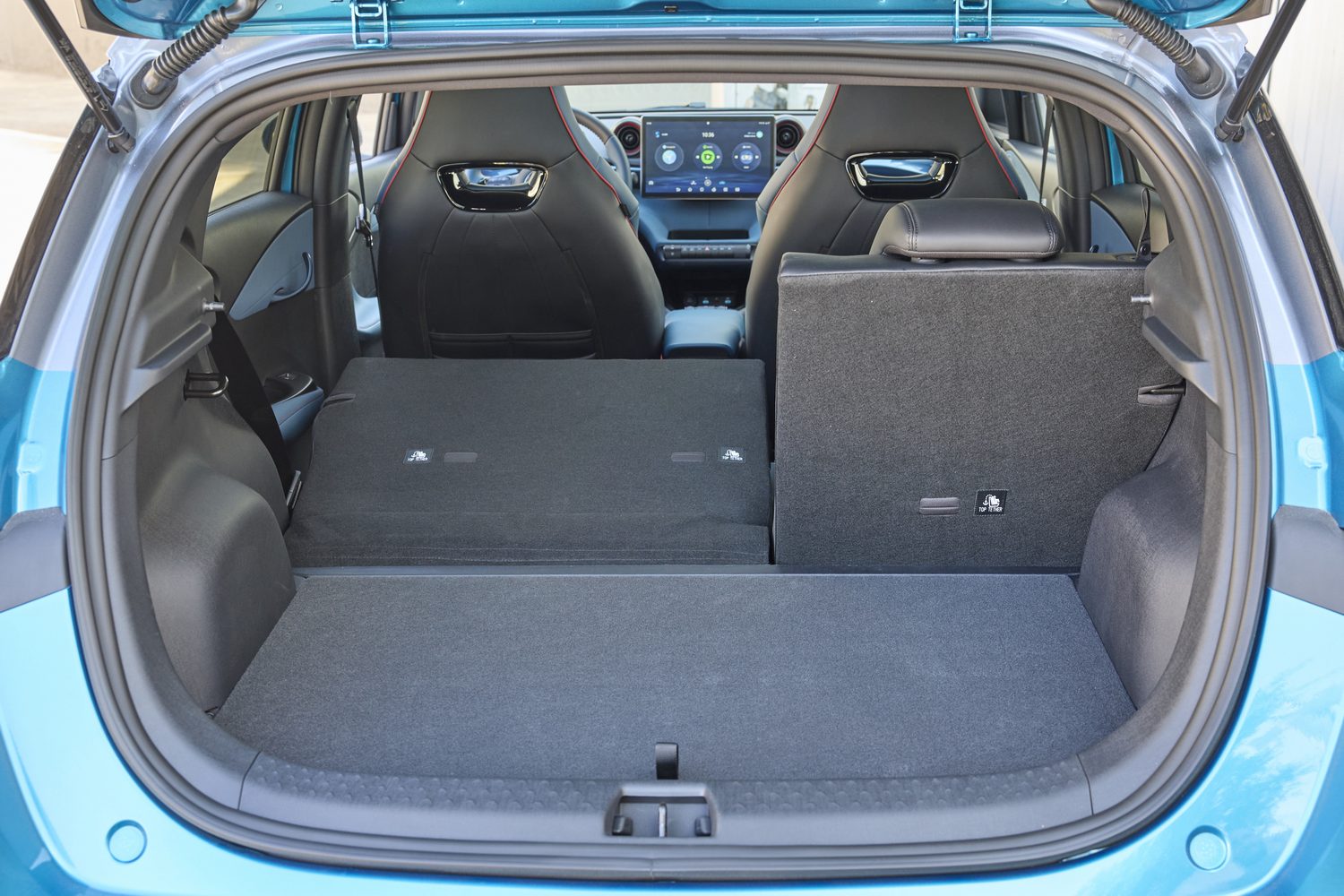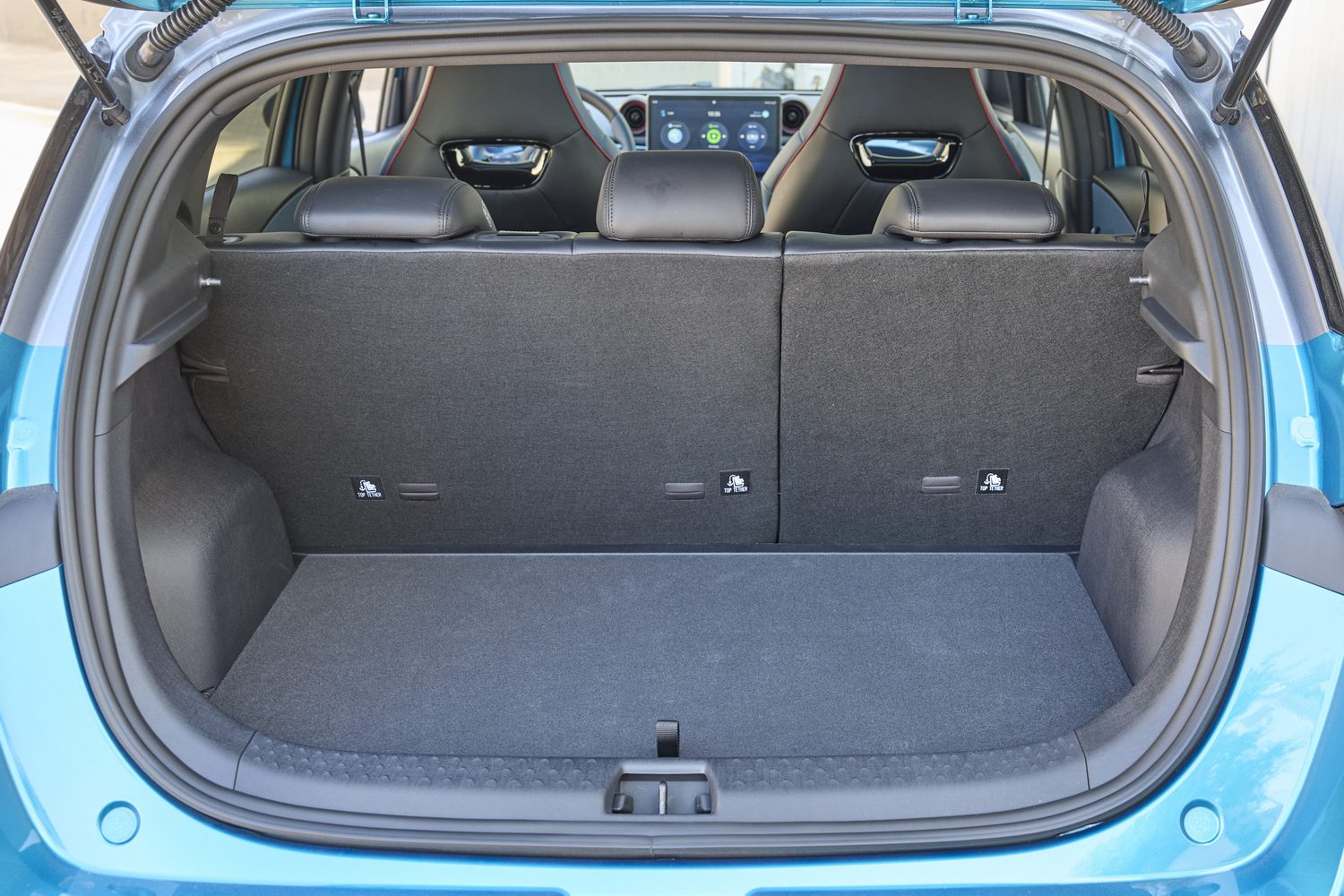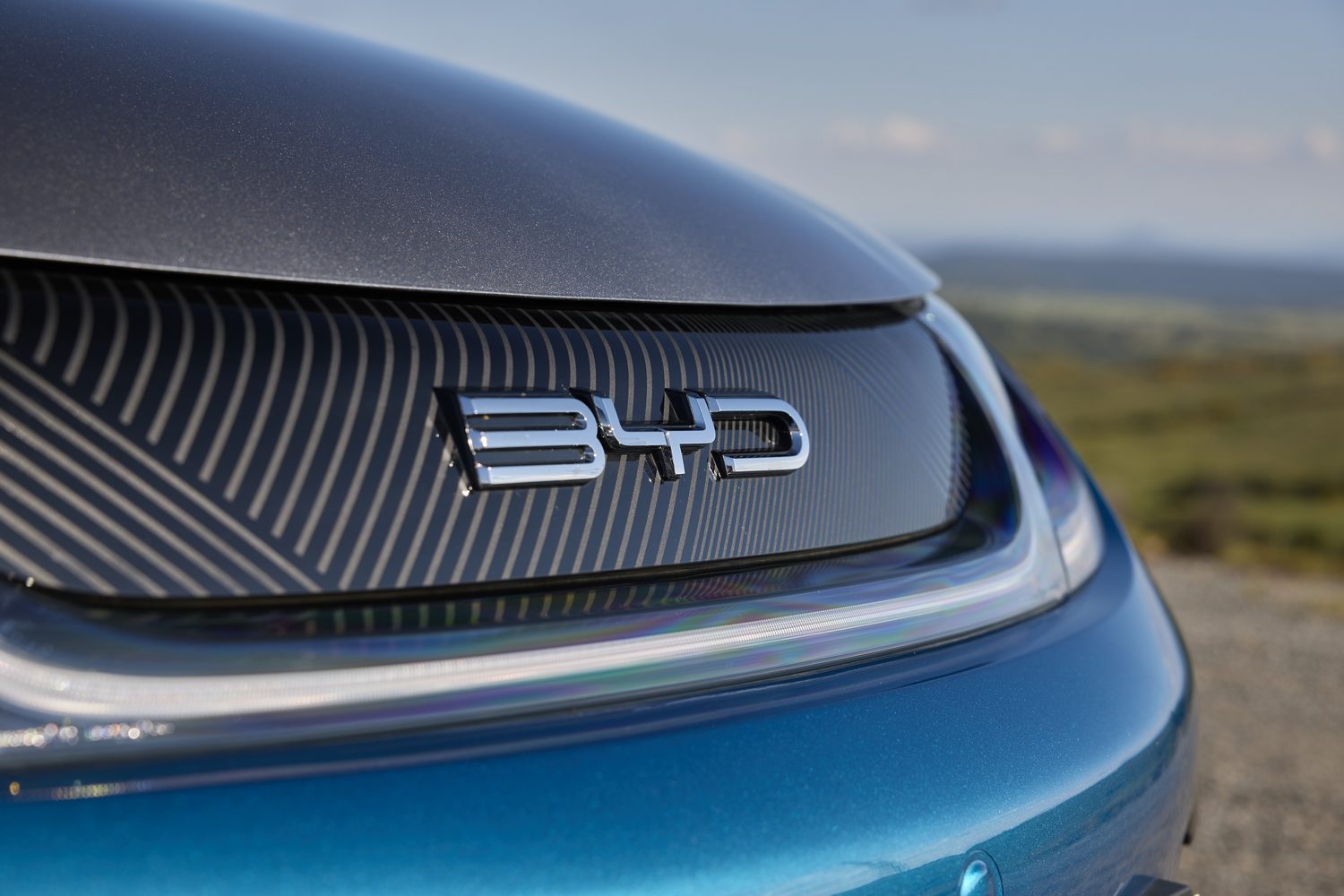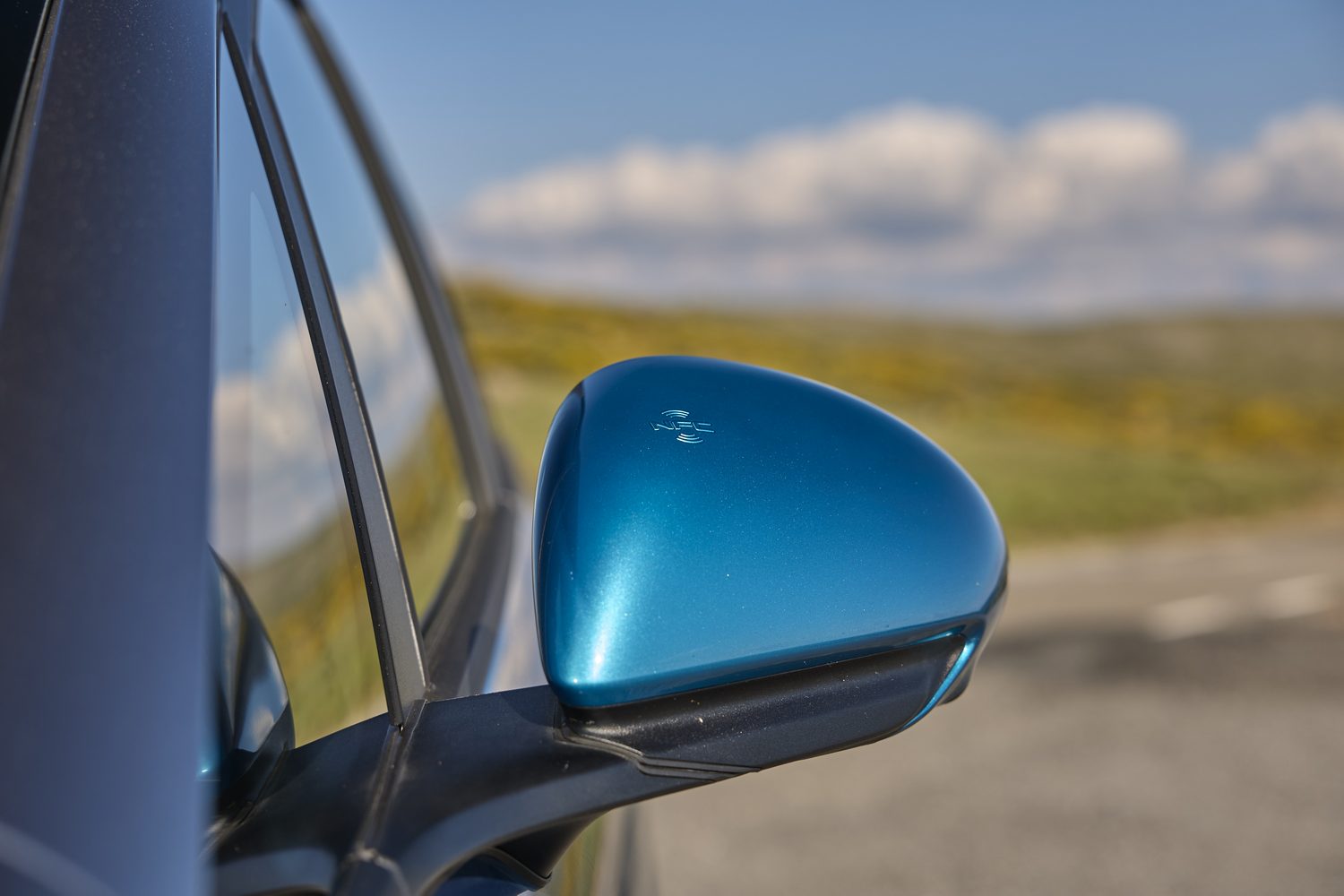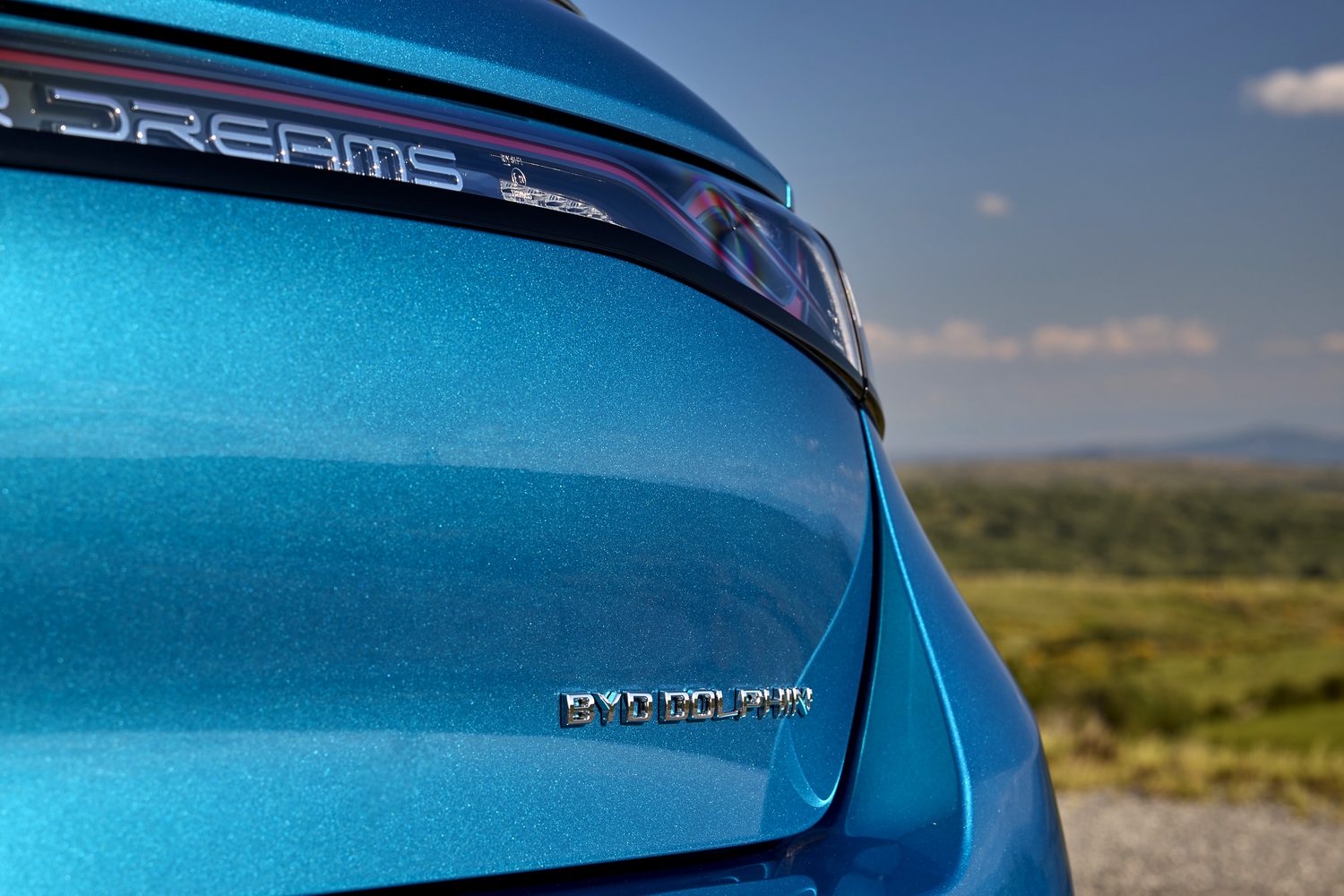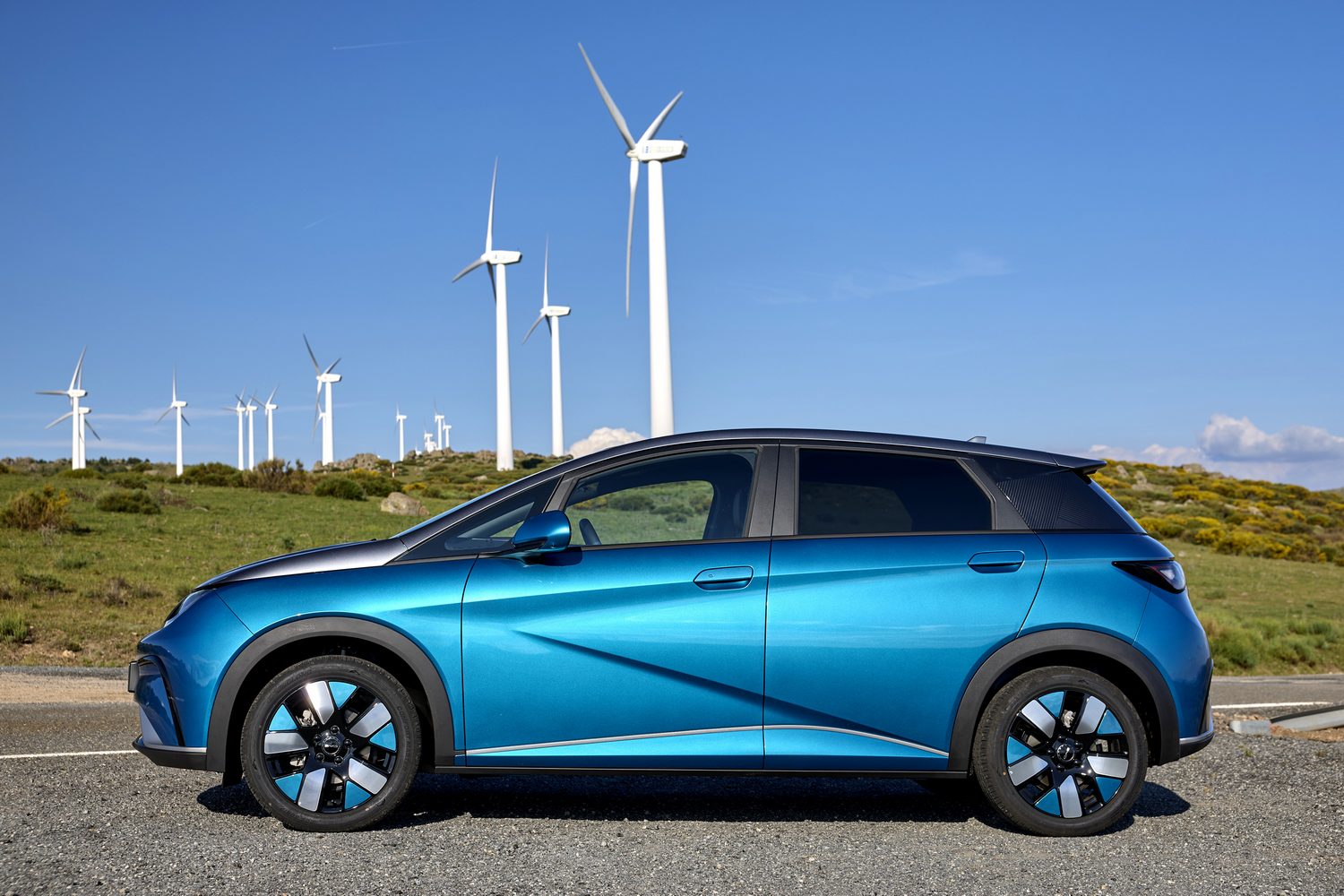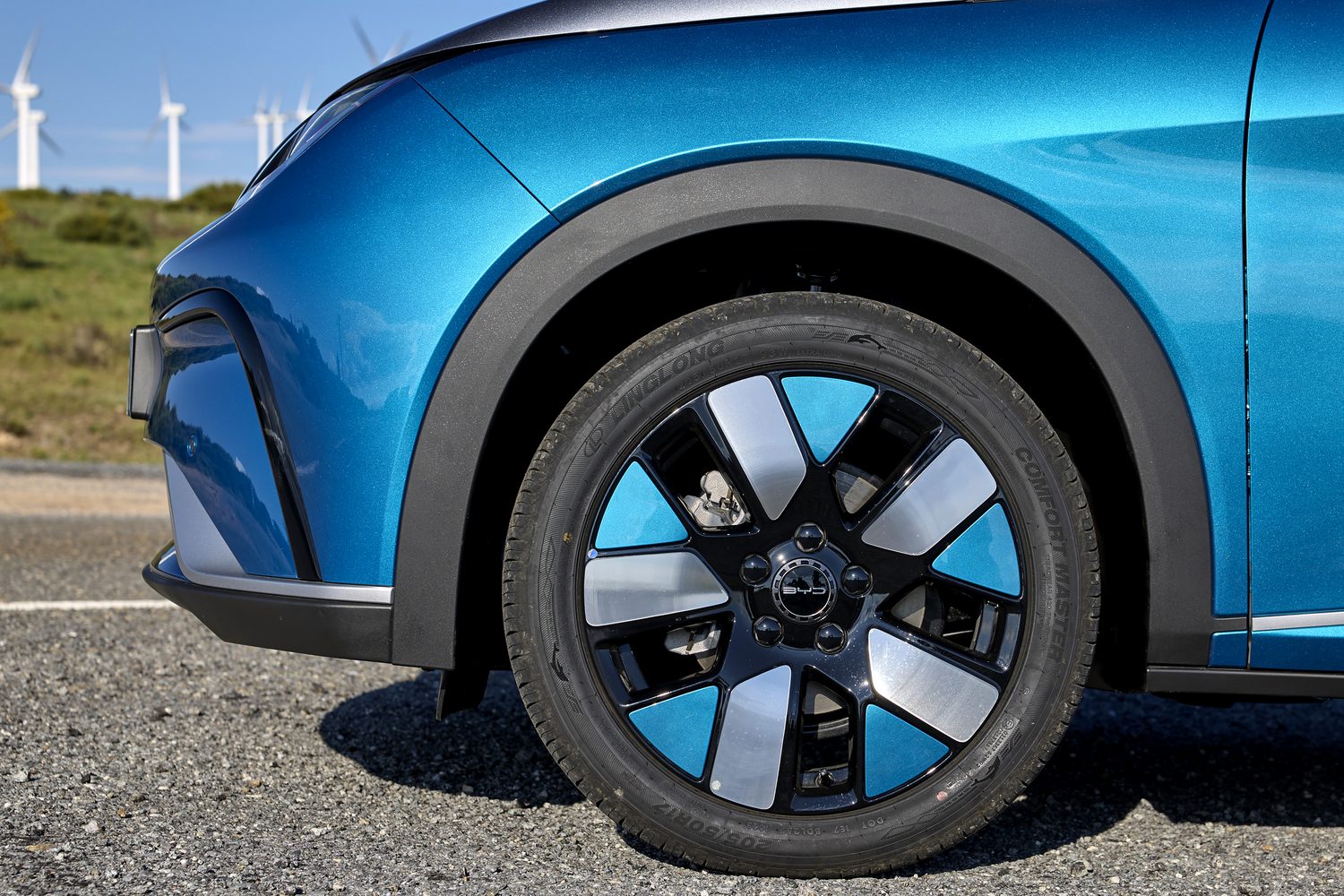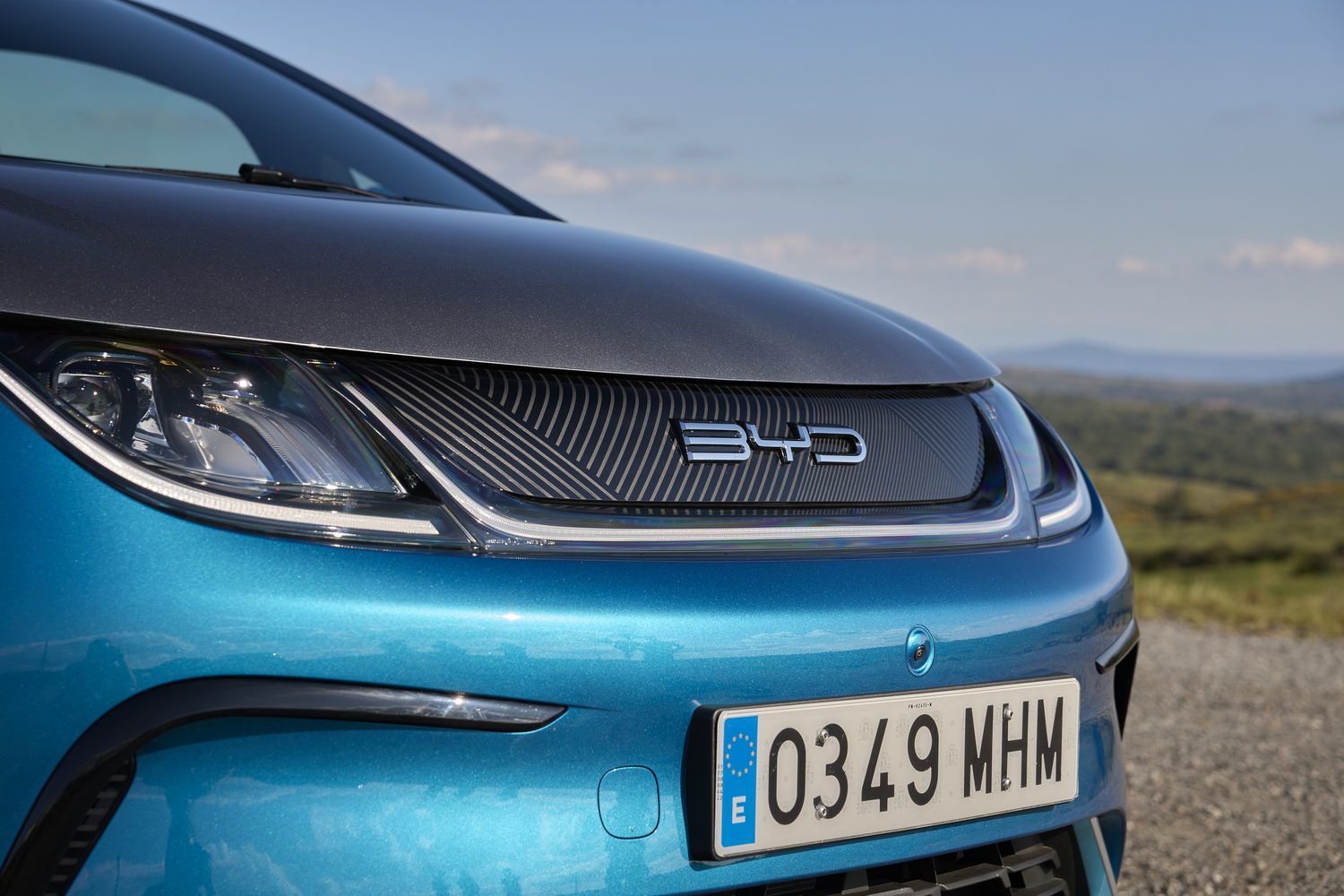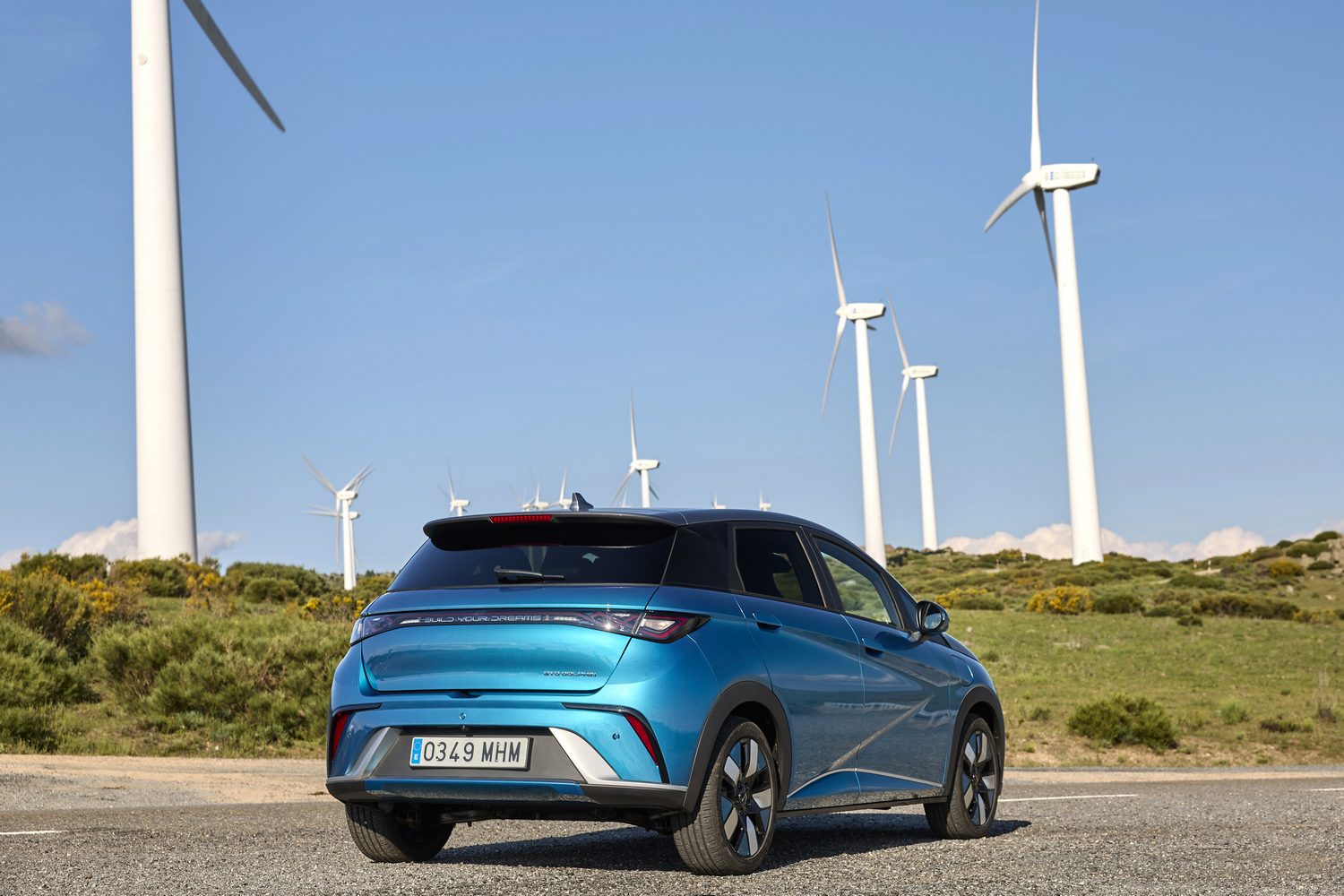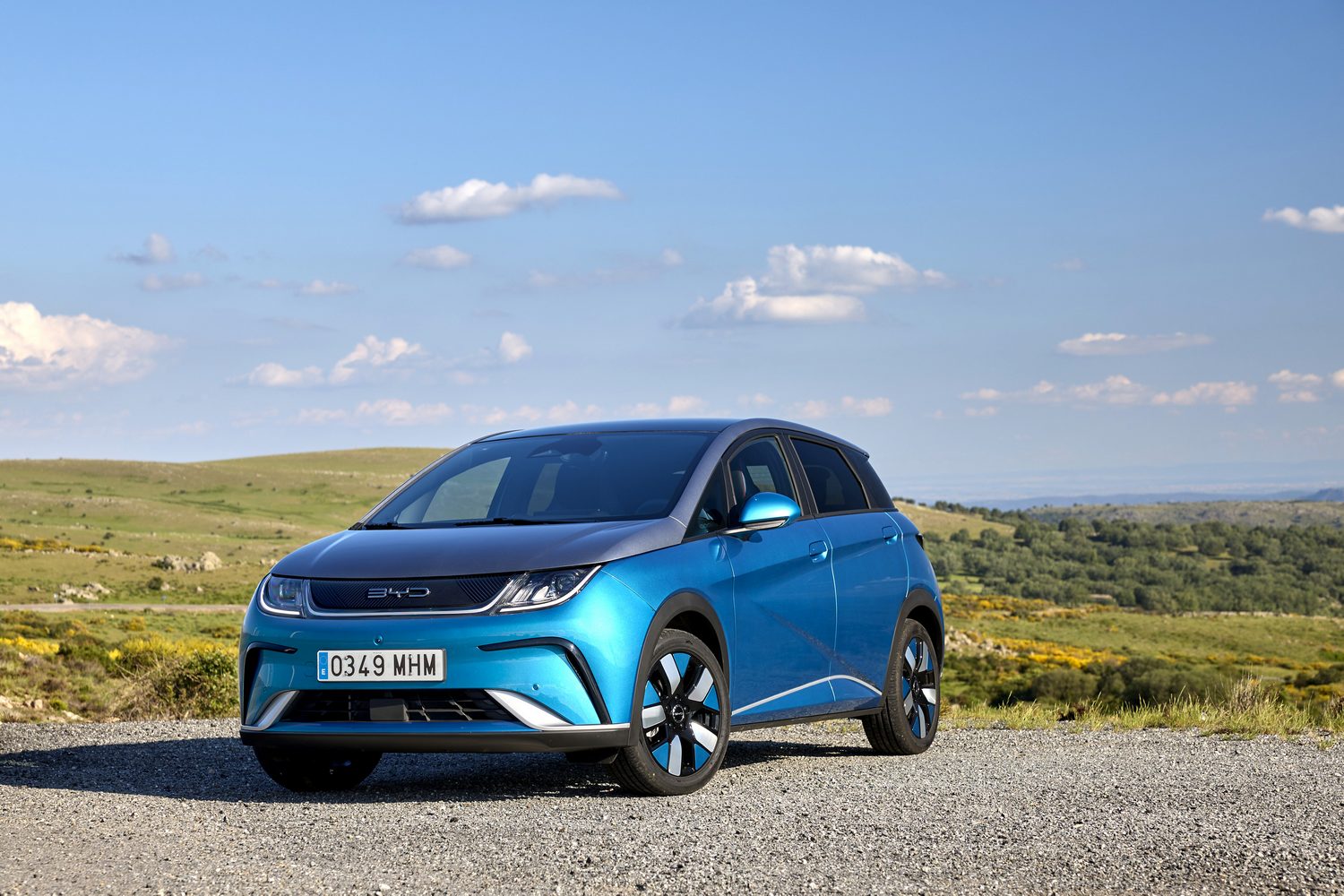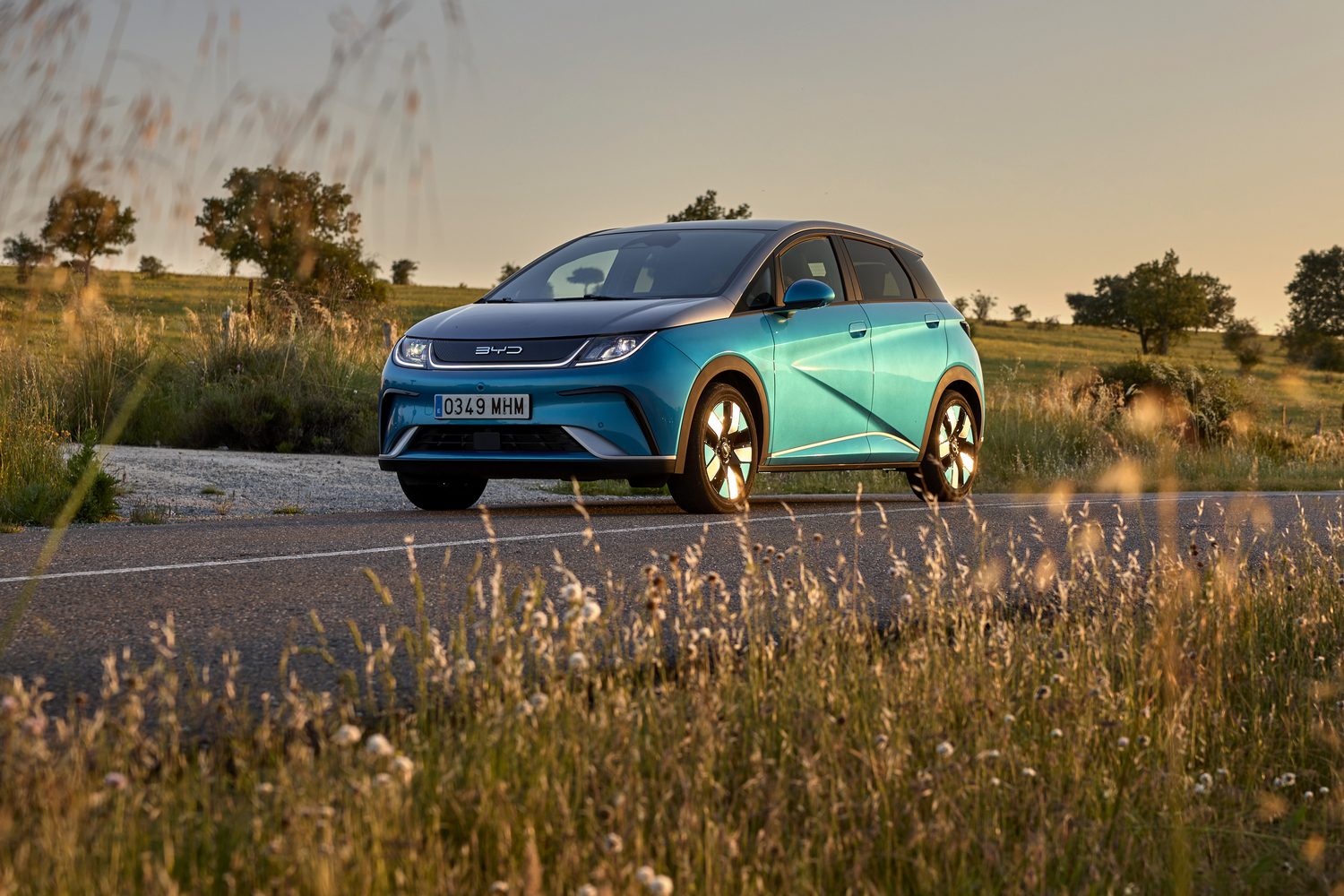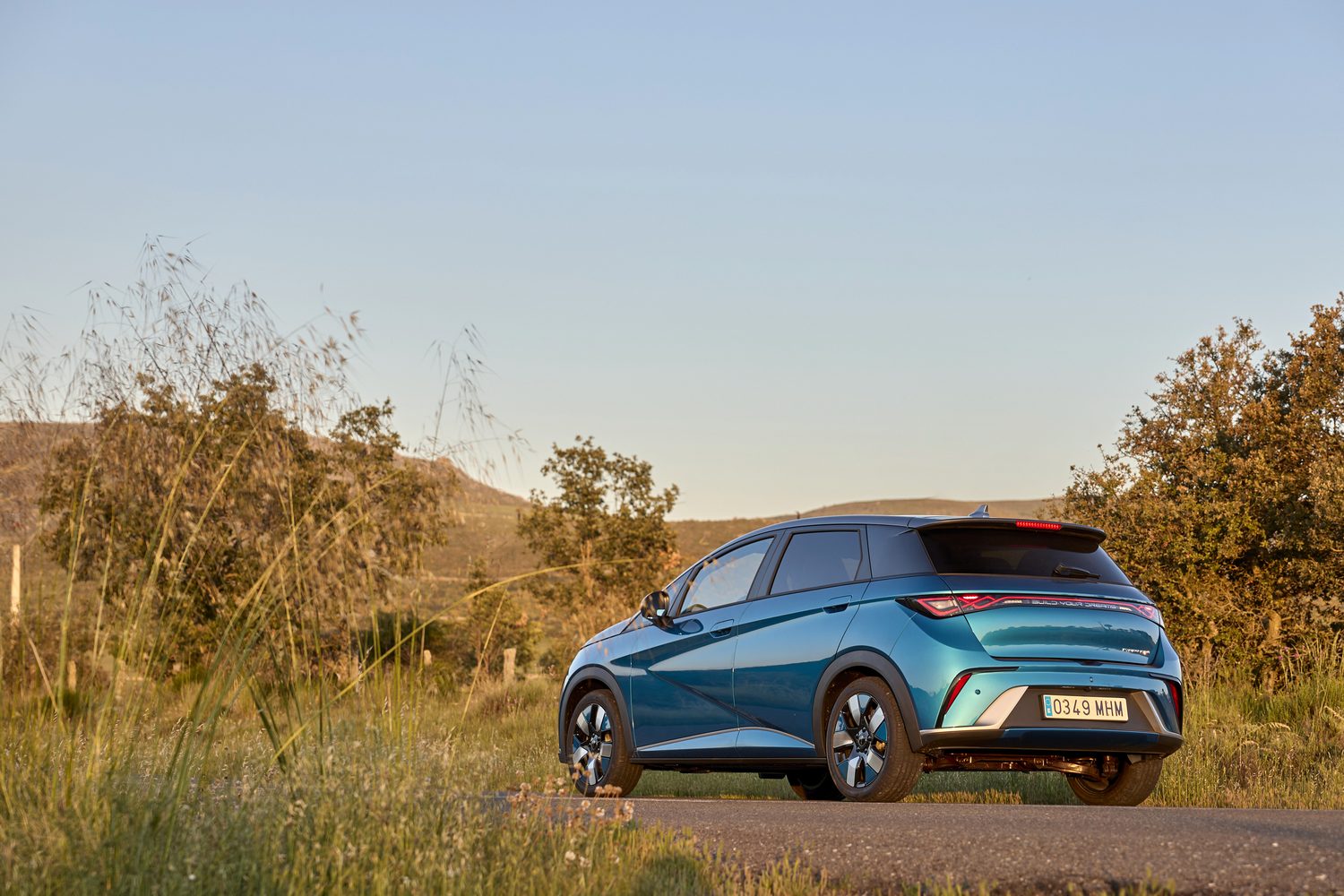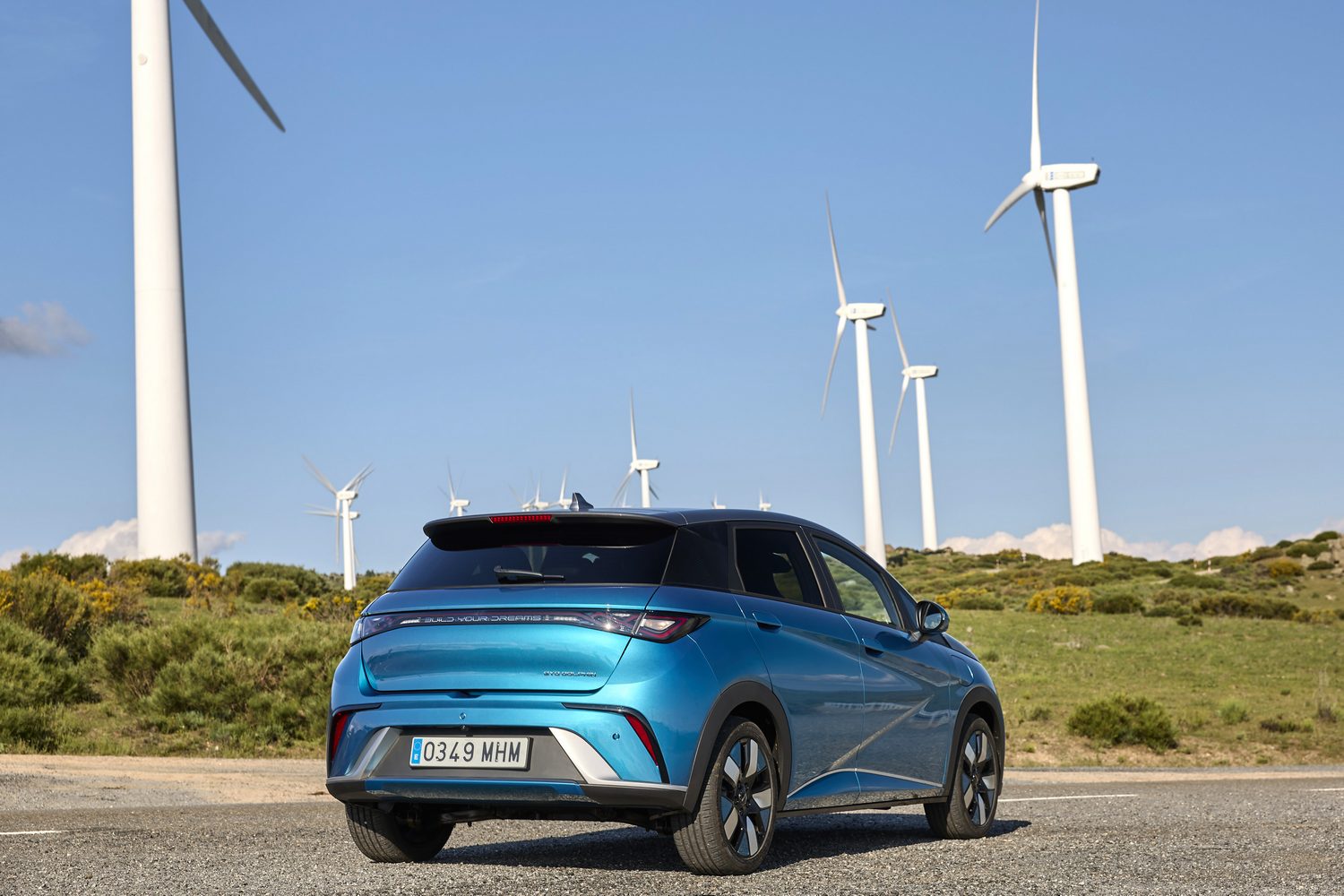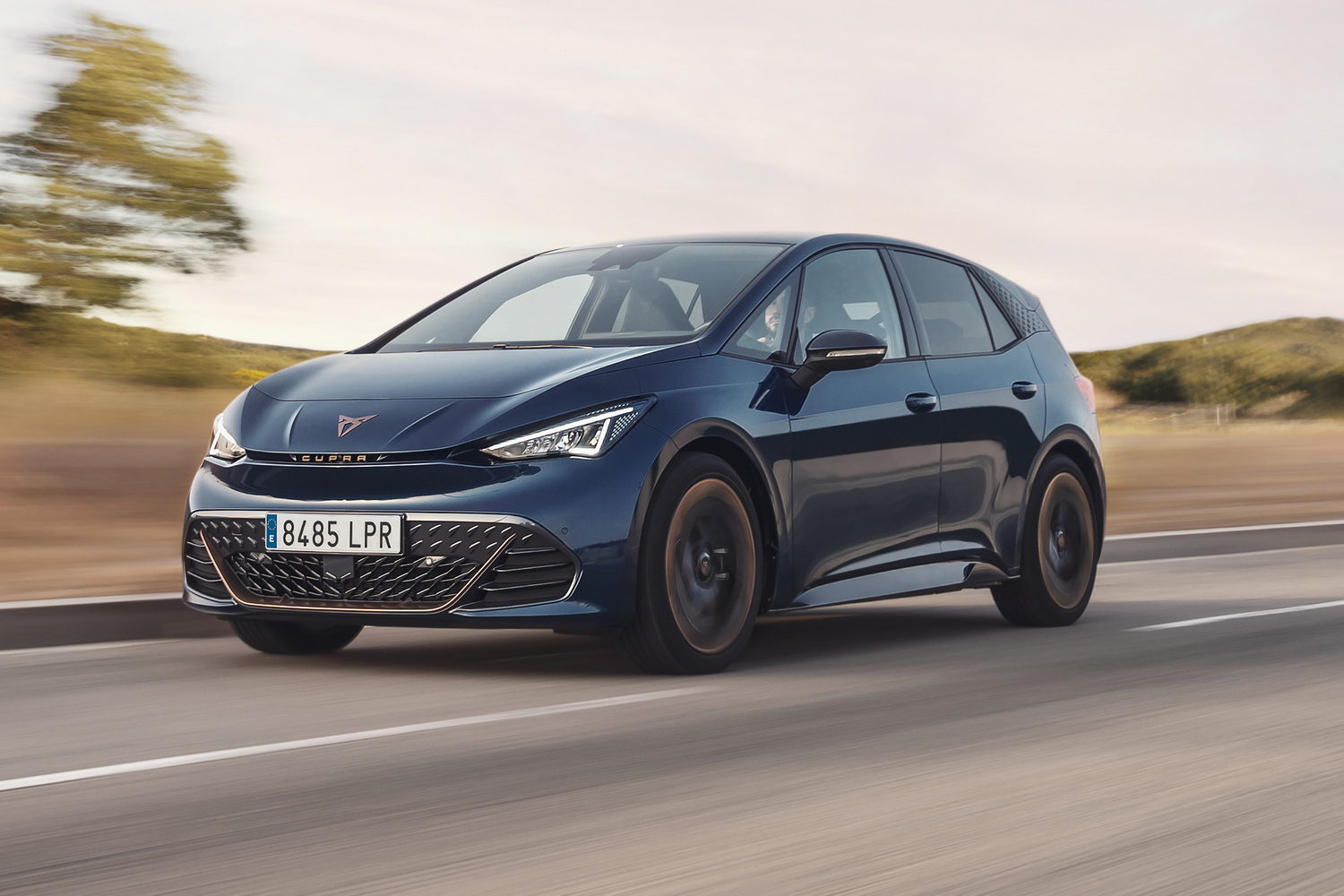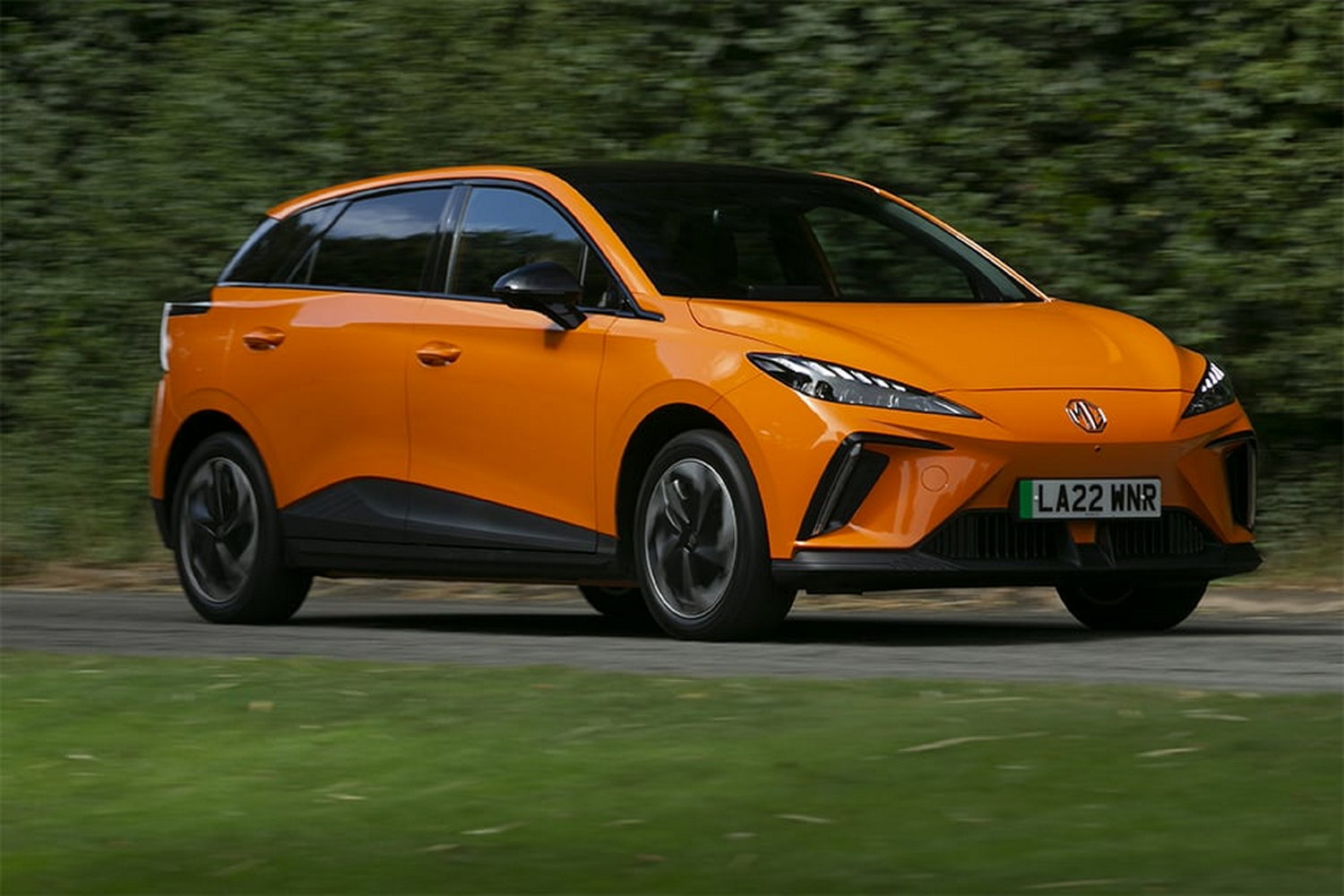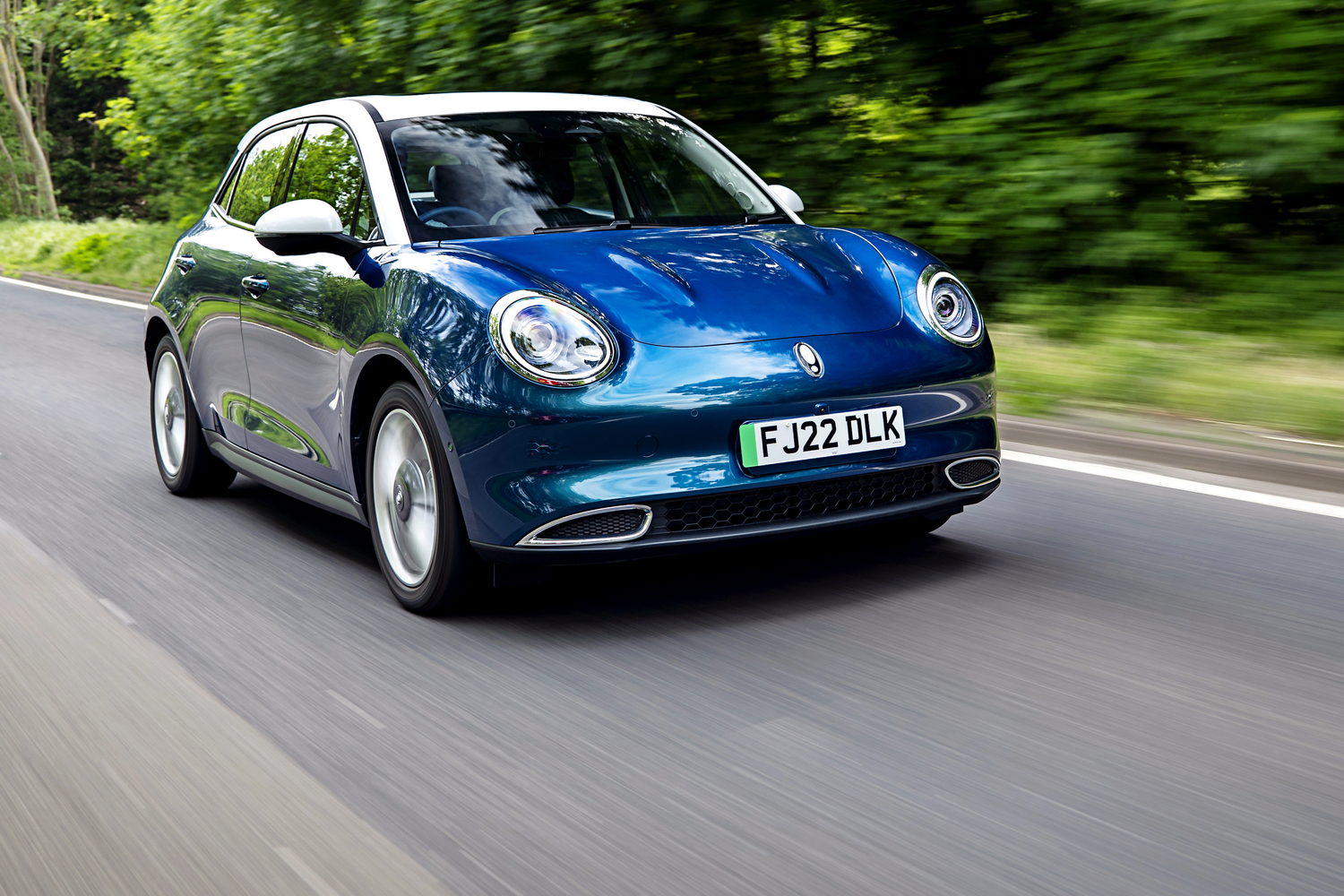BYD hasn't been shy about its ambitions for Europe, and indeed Ireland. The Chinese brand, which launched its first car, the Atto 3, on the Irish market earlier this year, is planning to bring out a host of new models and expand its dealer network enormously over the coming 18 months. Part of this assault on the market is the new Dolphin, a compact electric hatchback that's here to mix it with the MG 4 and Ora Funky Cat at the budget end of the EV market. It's competitively priced, for sure, but does it have the class to compete with its commendable rivals?
In the metal
We've become used to electric cars looking a bit different. Vehicles such as the Hyundai Ioniq 6, Kia EV6 and Cupra Born are all 'distinctive', but the Dolphin takes a somewhat different approach. Instead of being bold and out-there, the Dolphin feels quite restrained in its design, even if it is available in a refreshingly bright selection of colours.
In truth, the Dolphin looks a little bit bland on the outside, with the featureless front and the slab sides. Even the slightly more interesting rear can't save it - partly because of the cringeworthy "Build Your Dreams" lettering emblazoned across the tailgate. Apparently, the company is listening to European feedback on this lettering, and it's looking at replacing it with something else or removing it altogether.
Anyway, while the exterior design might feel a bit 2000s, the cabin is much more modern. BYD says the design is supposed to be wave-like, in keeping with the Dolphin name, but whether you buy into that or not, there's no denying it's interesting. It's quite stylish, too, although you have to be a bit careful with colour schemes. The black-on-black options look a bit drab, while the blue-and-black looks a bit too bold. The pink-and-white version is softer, but it's like living inside a Polly Pocket. A reference for the 1990s kids, there.
Whichever colour scheme you opt for, you get synthetic leather upholstery and a selection of different cabin materials. That might ordinarily feel like a bit of a hot mess in a car interior, but the Dolphin manages to bring things together cohesively. For the most part, the materials either look or feel premium, although you don't always get both qualities together. Some of the plastics look much better than they are, and they feel a bit cheap and scratchy on closer inspection. Beware of the brighter dashboards, too, because the metalflake-style finish in the air vent surrounds catches the sun and can be quite distracting if you aren't wearing shades.
Overall, the cabin design is rather good, though, with the big 12.8-inch rotating central screen forming a fitting centrepiece. That's surrounded by plenty of shelves and cubbies, a 'floating' centre console with storage underneath and a digital instrument display set behind the steering wheel. Other little touches include the drive selector on the bank of rocker switches in the middle of the dash, and the 'dolphin flipper' door catches, which divide opinion somewhat.
Some of those features are easier to get on with than others, with the touchscreen offering an occasionally confusing array of menus, as well as a design that's clearly intended to ape Google's Android interface. Of course, you could just plug your phone in to get the real deal via the more competent mirroring system - whether you have an Apple or an Android handset. That can't replace the instrument display, though, which is a bit small and occasionally difficult to read, with a plethora of colours and small icons that don't always show up especially clearly. The major things - speed and the like - are pretty clear, but some of the less crucial information could be displayed with more clarity. Black backgrounds with white lettering aren't sexy, but there's a lot to be said for them.
The rocker buttons on the dash take a bit of getting used to, too. Switching the hazard lights on and off isn't as intuitive as it should be, and nor is changing between forward and reverse. But perhaps the most irritating thing is the software, which loves a good beep. And sometimes it speaks to you, particularly if you're speeding. Exceeding the limit by relatively small amounts (not that we'd condone ever doing that) elicits a dispassionate automated voice alerting you to your folly and imploring you to slow down. It feels like overkill.
As does the amount of room in the back of the Dolphin. Legroom is positively plentiful, and headroom is more than sufficient, too. You can happily fit four tall adults in there, and a smaller adult will fit in the central rear seat, too, although we wouldn't want to be there for too long.
Sadly, boot space is less generous, particularly with the false floor in place. Nonetheless, the 345-litre luggage compartment is much bigger than that of the Ora Funky Cat and roughly the same as that of the MG 4. And when you fold the back seats down, all that rear cabin space gives it a very roomy 1,310-litre load space when the rear seats are folded away.
Driving it
Dolphin buyers get a choice of two different batteries and three different motor outputs, although you can't mix and match quite as much as that detail suggests. Opt for the basic Active model and you get a 44.9kWh battery with a 95hp electric motor, which will offer pretty stodgy performance. But upgrading to the Boost model ups the power considerably to 176hp, while still using the same battery. The more upmarket Comfort and Design models both get the bigger 60.4kWh battery and a 204hp electric motor, which provides plenty of poke.
Officially, the 60.4kWh versions of the Dolphin offer more than 400km of range and a 0-100km/h time of around seven seconds, although we doubt you'd manage both at the same time. Our initial test car didn't perform brilliantly on either front - it felt seriously underpowered and struggled to get up hills, as well as failing to get anywhere near its official range - but it later emerged that a software fault was limiting the power available to around 100hp.
We subsequently drove a fixed car, which was much sprightlier without feeling especially rapid, but we didn't get long enough with the vehicle to assess its range effectively. What we can say, though, is we'd be wary of the basic Active model, because the 95hp on tap may not really be enough to make ample progress. And when you're using all the performance available, battery life is likely to be adversely affected. With just around 340km to play with in the first place, there isn't all that much room for manoeuvre.
The other reason we'd avoid the Active is because it might detract from one of the Dolphin's biggest selling points. Our high-specification test car came with an incredibly soft ride, which makes it enormously comfortable in town. On faster roads, it's a bit less settled - the dampers don't have the authority to keep the body under control - but it still soaks up the bumps pretty well. But that comfort is down, at least in part, to the multi-link rear suspension fitted to Boost, Comfort and Design versions. Active versions, however, get a cheaper torsion beam set-up, which may not prove as pliant.
On the other hand, perhaps that suspension may make the Dolphin handle a little more cohesively, because the more upmarket cars get into a bit of a mess in quicker corners. Grip is plentiful, but with little feel through the steering wheel, the car will scare you out of fast cornering long before it lets go of the road. That's partly down to the softness of the springs, which leaves the car feeling floaty over undulations, and partly because of the lack of body control. The Dolphin leans quite dramatically in corners, and that can be quite startling. The movement of the body also seems to drag the car around a bit.
Although few Dolphin buyers will be treating this car like a hot hatchback, it's worth pointing out that the MG 4 feels much more composed at speed and it's little less comfortable. Nevertheless, the Dolphin takes some beating as a city car, where the narrow body and light steering come into their own. With the punch of the electric motor (when it's giving its all), it's a very capable and comfortable urban runabout.
It is quite a noisy one, though. Not only is there the annoying beeping and chirping of the safety systems, but there's a strange whistle emitted at low speeds, presumably to alert pedestrians to your presence, but it just sounds like a haunted house. Still, it's a good sound effect on Halloween. And when you speed up, things should get better, but any other noise is drowned out by the tyre roar. It isn't horrendous, especially in the context of small cars, but with no engine to counter the road noise, BYD could have done with fitting a bit more soundproofing around the arches.
What you get for your money
One of the Dolphin's big selling points is its price tag. In Ireland, the Dolphin will first arrive in 60.4kWh form from September, with the Active and Boost versions following in due course, yet prices still start at just €27,818 for the Comfort model. That includes incentives in place now, so if you order after the July changes that price will increase to €29,318. That makes it roughly the same price as the MG 4 and noticeably cheaper than the Ora Funky Cat. When the Active and Boost models arrive at the start of 2024, using the smaller battery, the entry price will be lower again for the Dolphin.
You get plenty for your money, too. Comfort versions get the same 12.8-inch touchscreen, reversing camera and electrically adjustable synthetic leather upholstery as the basic Active, but they add 17-inch alloy wheels, front parking sensors and heated front seats. Upgrading to the €30,025 Design gets you the two-tone paint, a panoramic roof and wireless phone charging.
Summary
On paper, the Dolphin makes a lot of sense. It's competitively priced, it offers a reasonable range and it's pretty comfortable. But a lack of polish in the driving experience lets it down, and though it offers strong competition for the Ora Funky Cat, it isn't quite as good an all-rounder as the MG 4. Nevertheless, those seeking a comfortable small car for pottering around town will get strong value for money from the little BYD.

